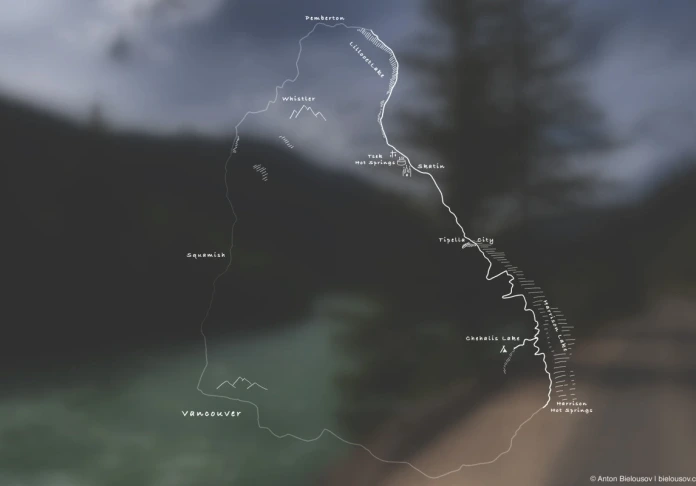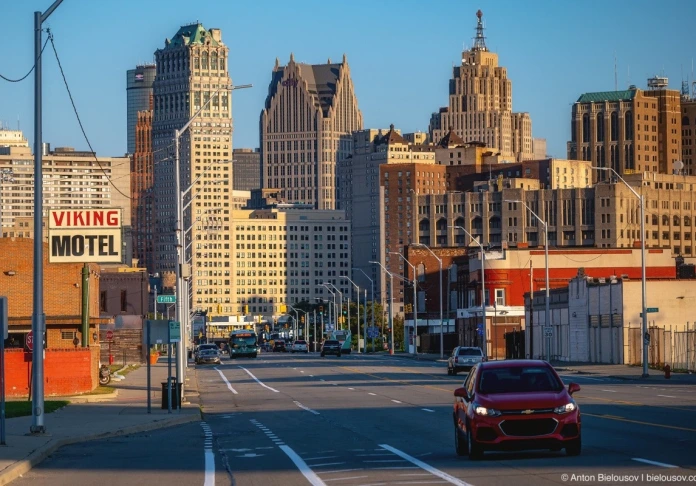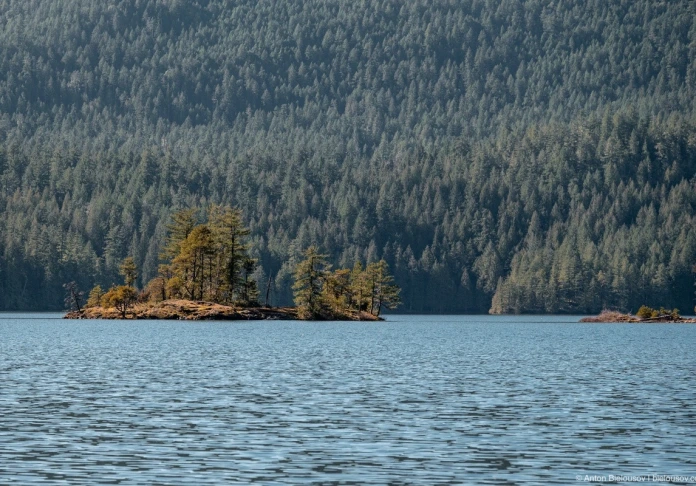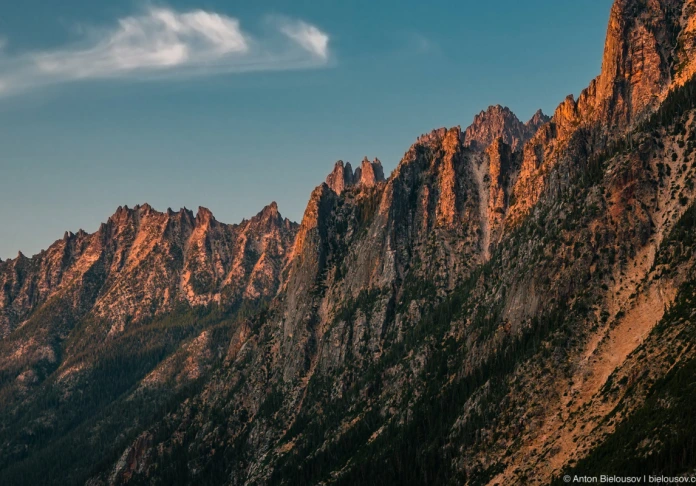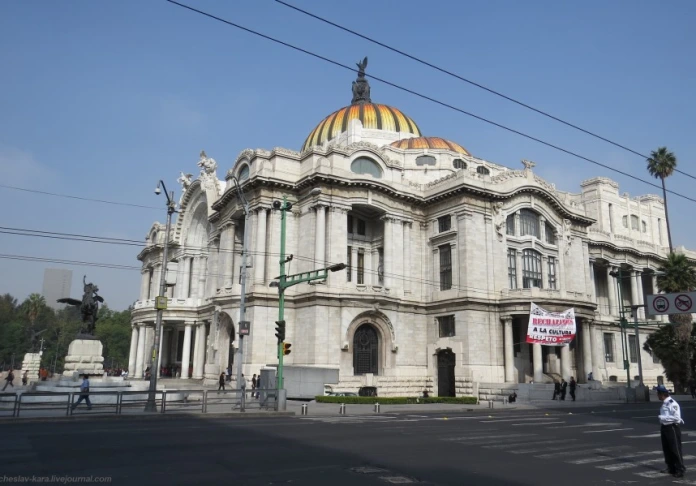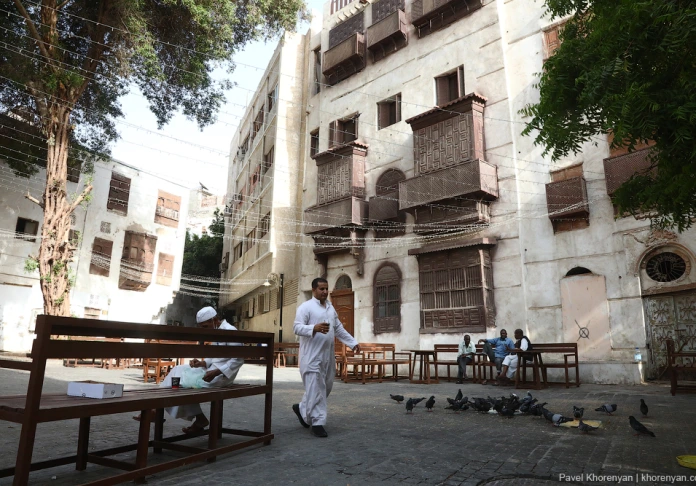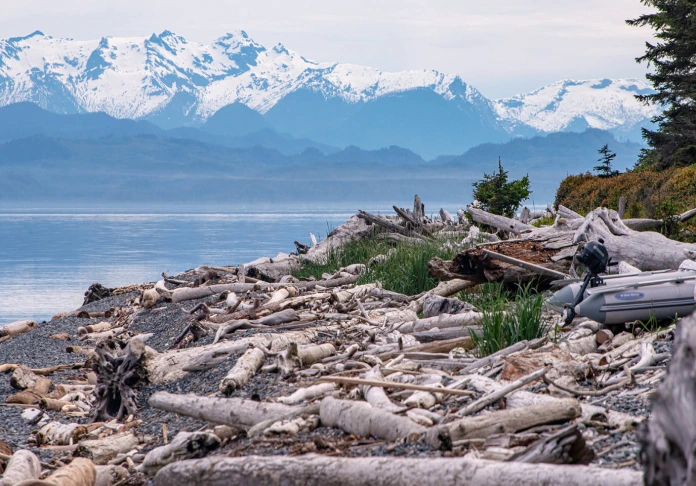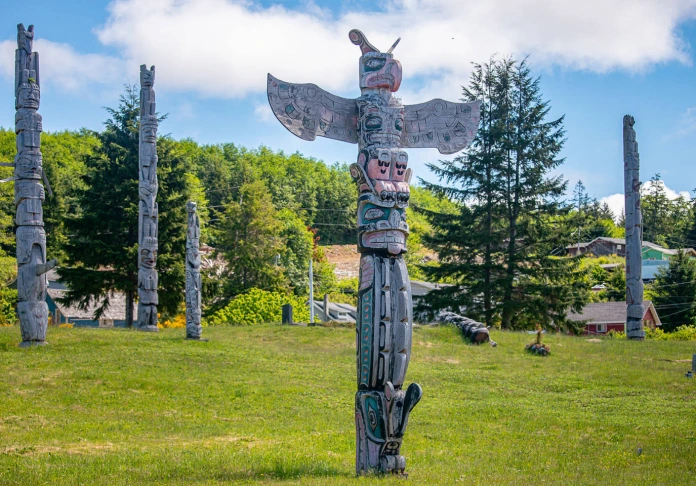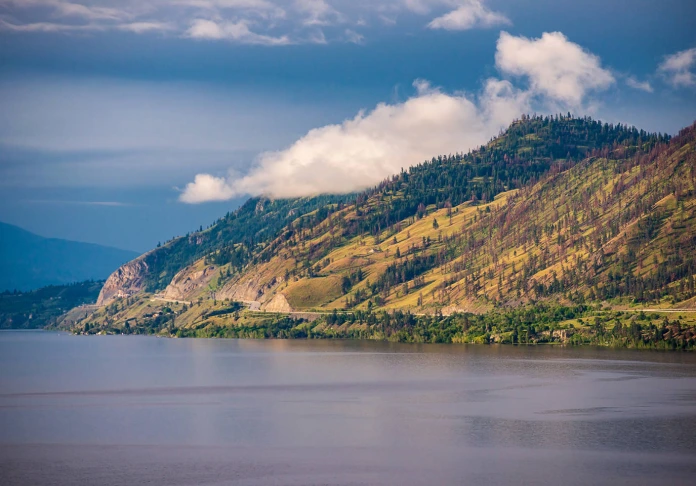Indian island Cormorant
A few miles off the western coast of mainland Canada, on the north side of Vancouver Island is the small Cormorant Island, where Native American culture is still alive and well. True, no one calls him that - everyone calls him by the name of his only settlement, which occupies almost the entire area - Alert Bay. If you are coming from Vancouver, the route will be the same as I described in the post about Malcolm Island, and will take almost a whole day. However, if you are already in Soinchul, then you can move by ferry to a neighboring island and back relatively quickly, and completely free of charge, that is, for nothing. Ferry services to small islands are usually paid only on the route from the mainland - I believe that it is believed that everyone should be able to return to civilization in any state.
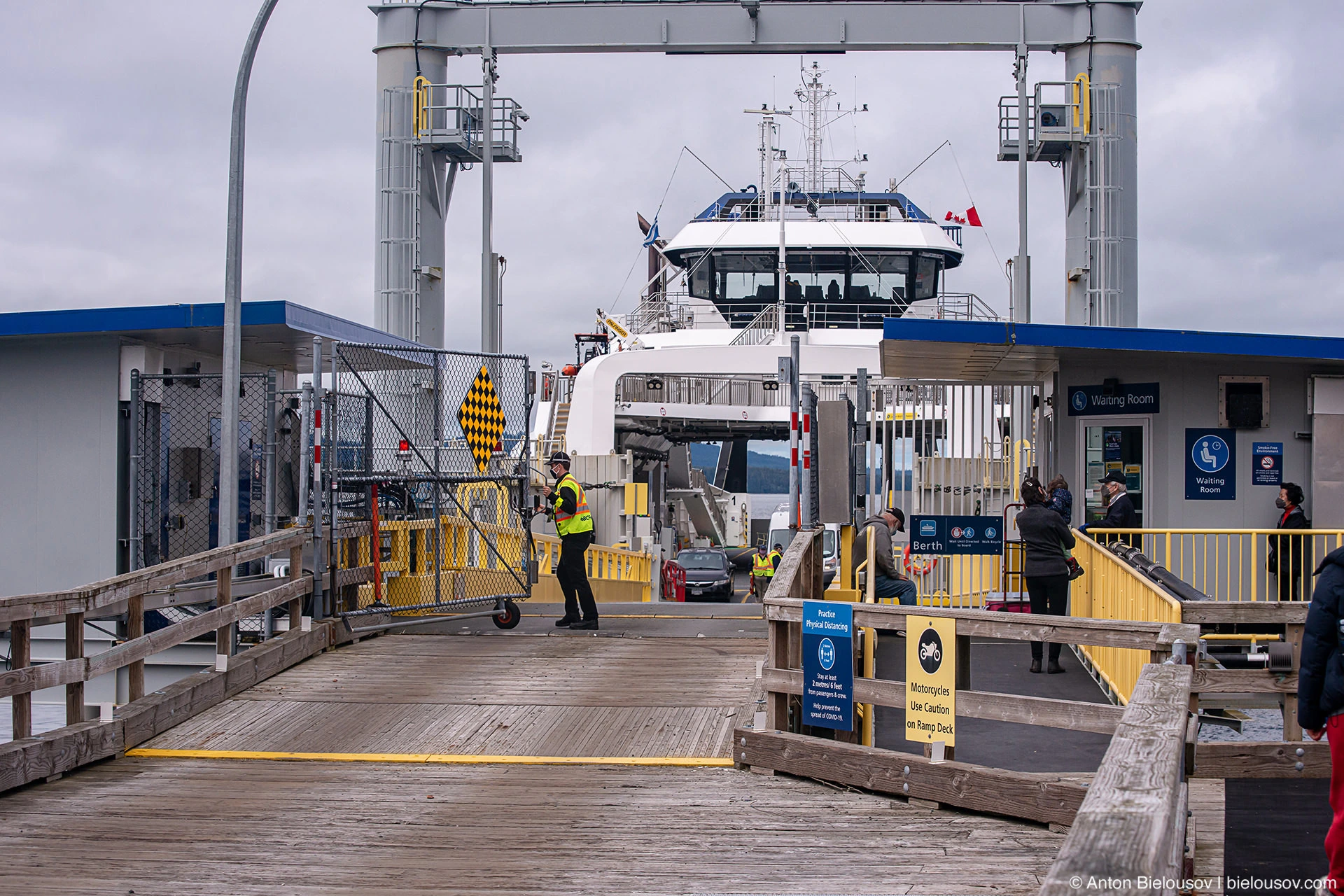
True, first the ferry enters Port McNeill, on Vancouver Island - and here the whole secret is not to get off there, otherwise then you will have to pay for the ticket. Because of this, the journey takes about an hour, but once a day the ferry goes from Soinchula to Alert Bay directly and then you can get there in just 15 minutes. Despite their close proximity, the two islands - Malcolm and Cormorant - are no more alike than your right hand and left ... kidney. Being several times smaller in area (4 x 1 km), the latter has twice the population (1,275 people), so after a few days on Malcolm it seems that life here is just in full swing and that the village has expanded to the whole island, which, by the way Like the coastline of neighboring islands, it is considered Indian land.
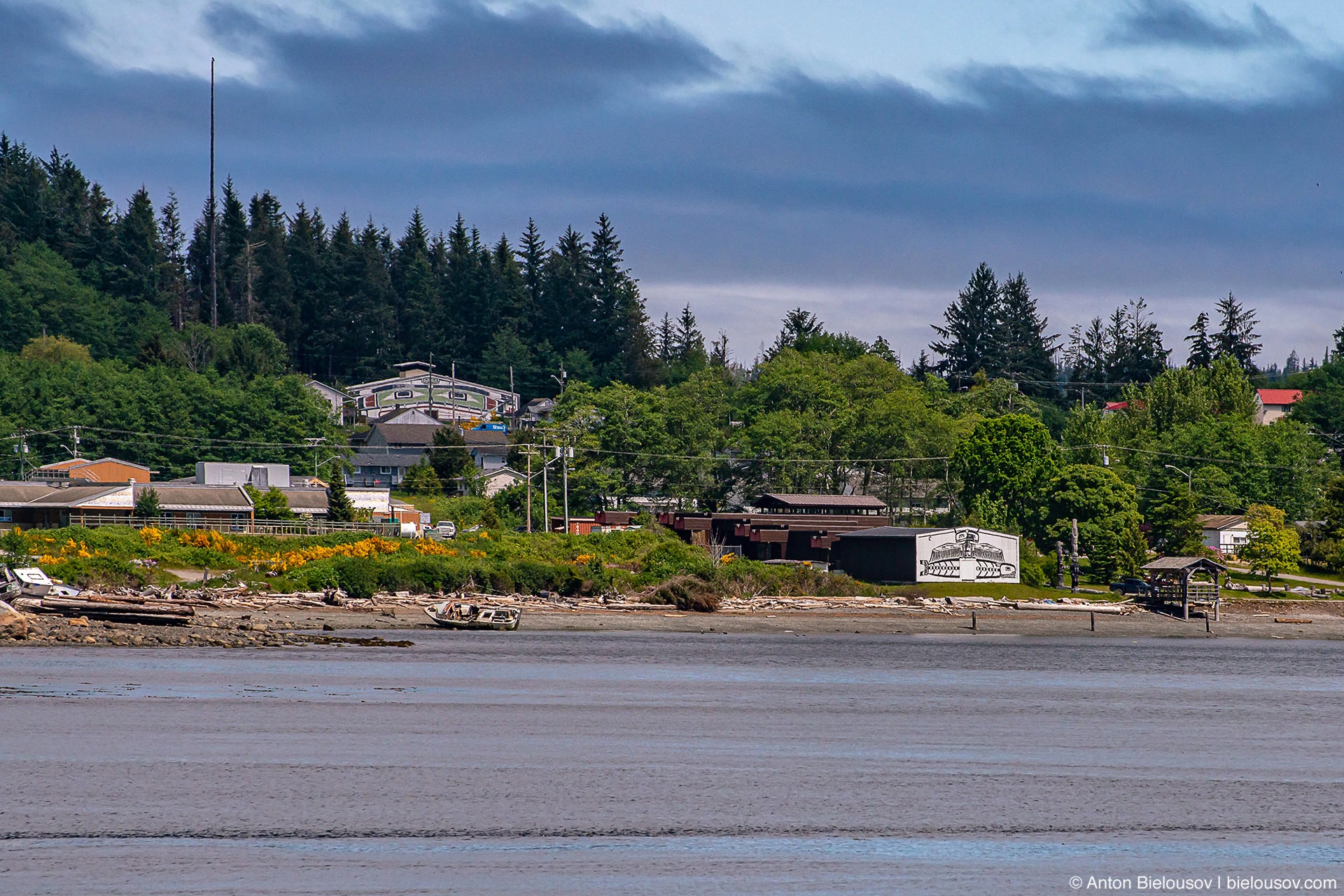
To be honest, I didn't quite know what to expect from the Indian island, so just in case I washed my scalp, left the car, copter and other stereotypes at home - and went on the ferry. The very first views that opened from the deck of the ferry on the way to the island were already very promising - here you have the Big House and the world's tallest totem.
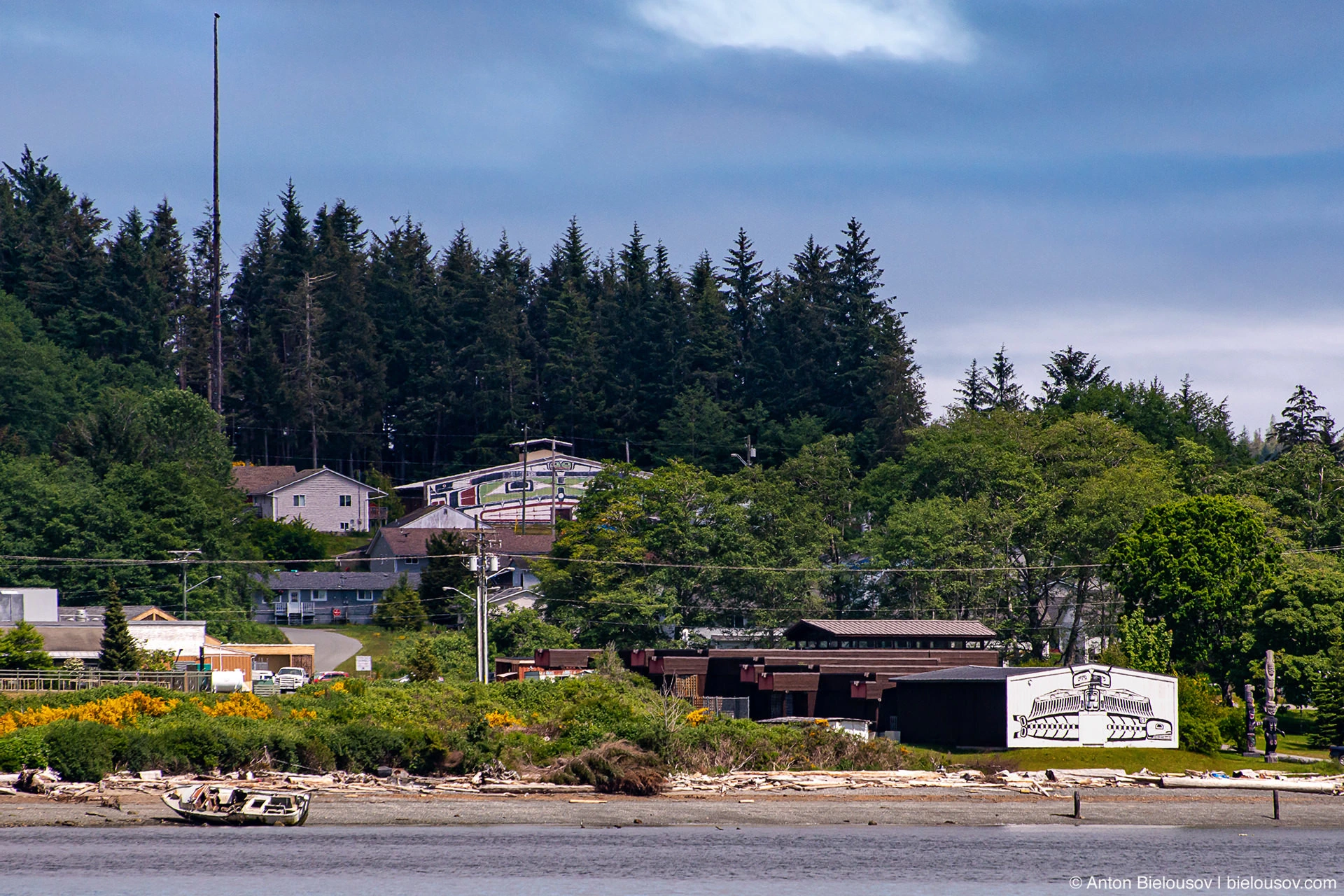
True, it turned out that this is the best angle in which I will be able to see both this and that this time. The village in which they are located is now closed to the public due to the pandemic. For the Indians, who were once mowed down by the viruses of Europeans, this is generally a sore subject. And the copter, as I said, I left at home.
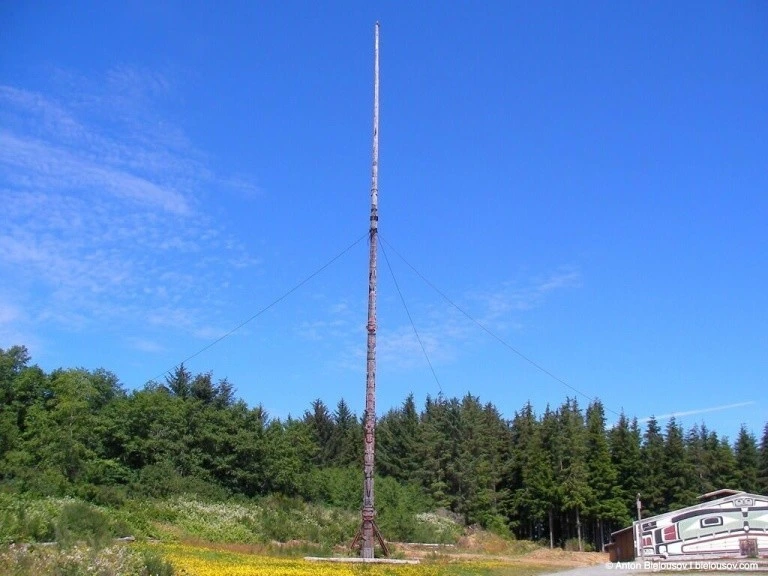
World’s Largest Totem Pole Steven and Darusha/CC BY-NC 2.0 [Creative Commons] Wait, but isn't the world's largest totem standing at Beacon Hill in Victoria - you ask? No, the totem in Victoria is only the 4th highest in the world (38.8m) and the tallest is located here, in Alert Bay, and it is one and a half times higher - 52.7m.
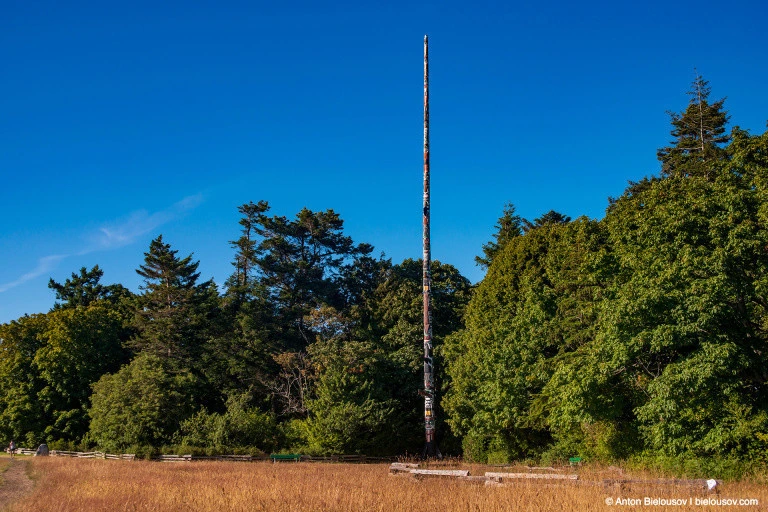
Totem in Victoria The local Namgis Indian tribe welcomes us right at the exit from the ferry.
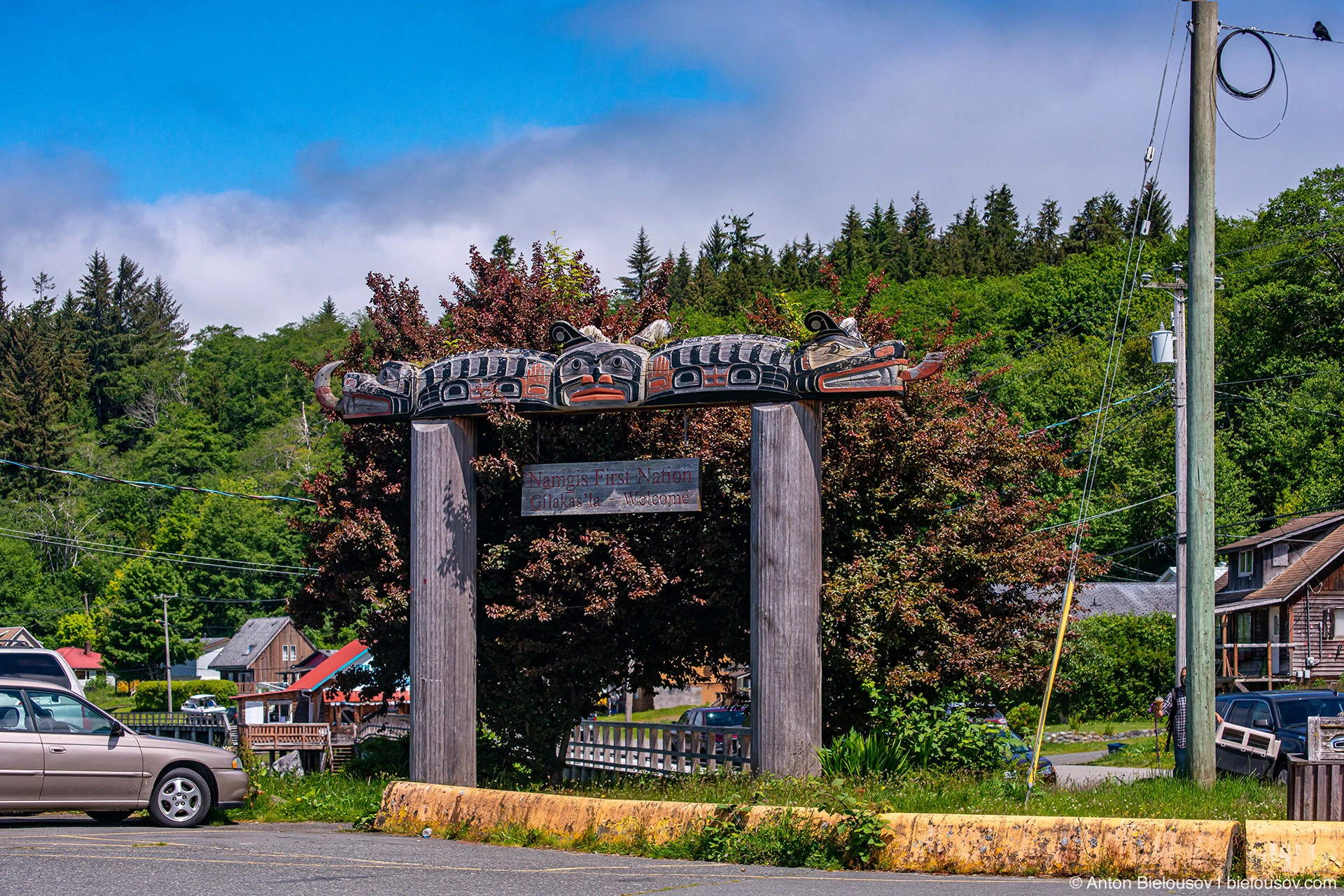
However, the central street of Alert Bay is more reminiscent of the fact that it was one of the oldest and largest fishing communities in the area, rather than a connection with indigenous peoples.
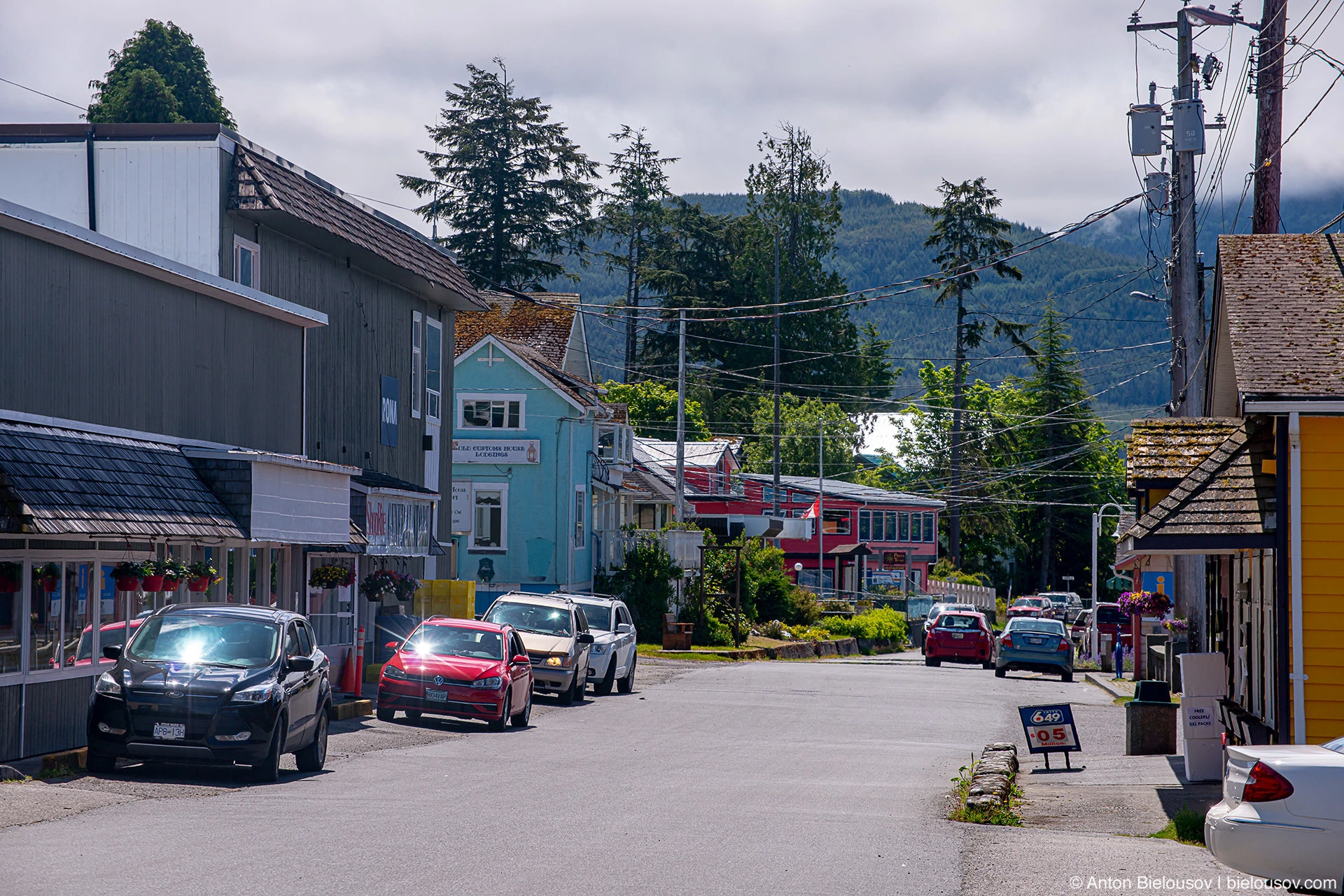
The architecture is quite typical for the west coast.
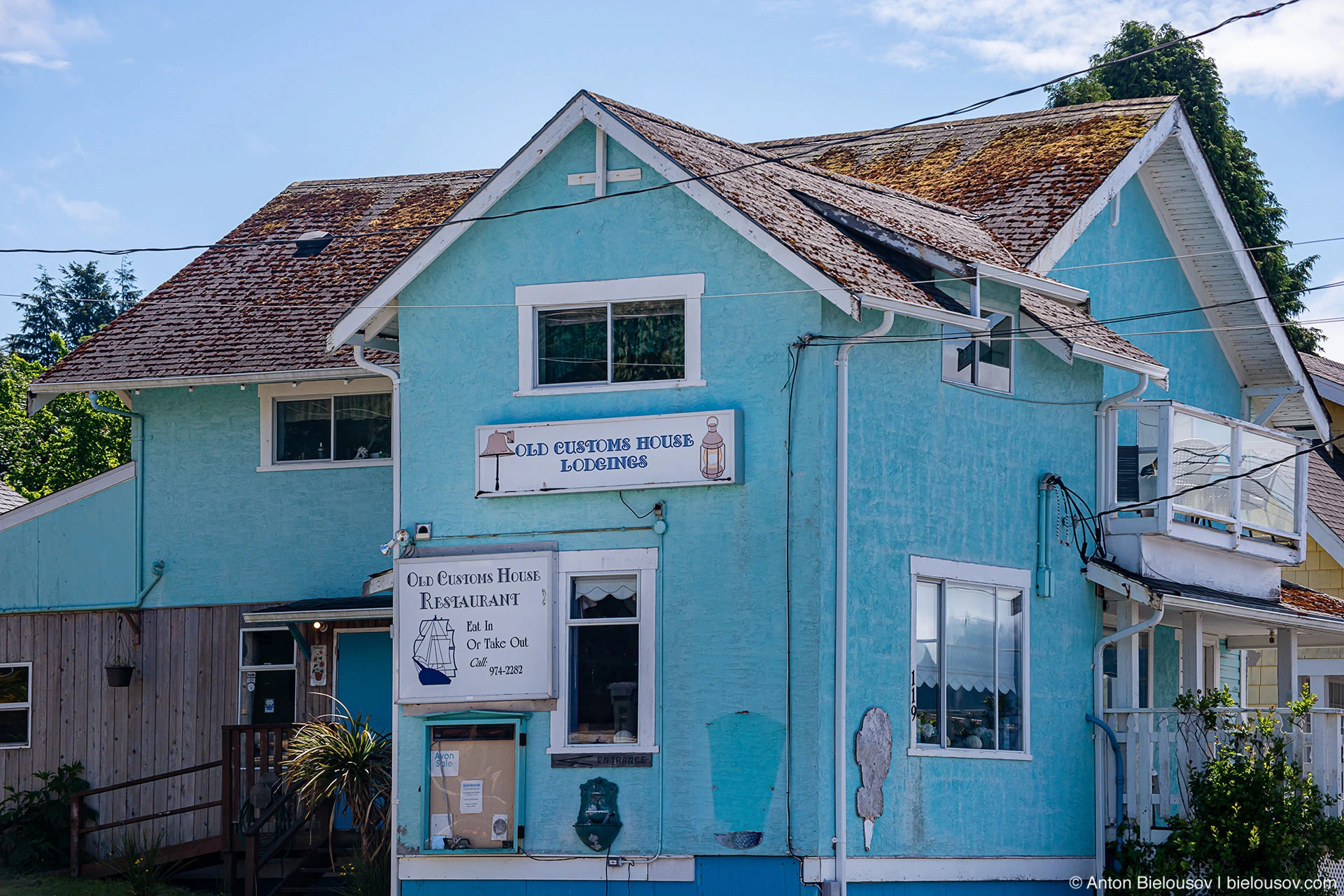
From the sea side, some of these buildings rise on interweaving wooden piles.
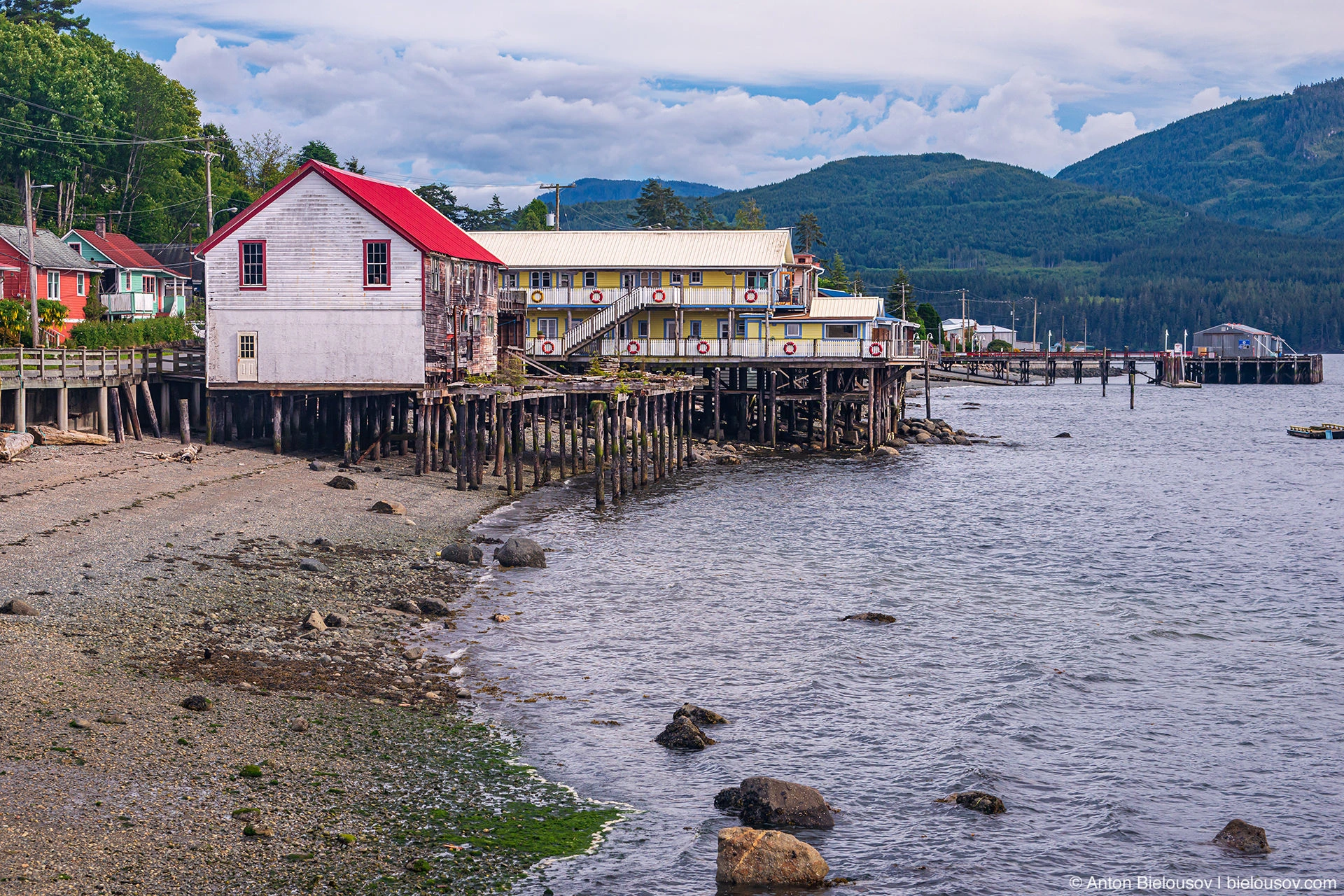
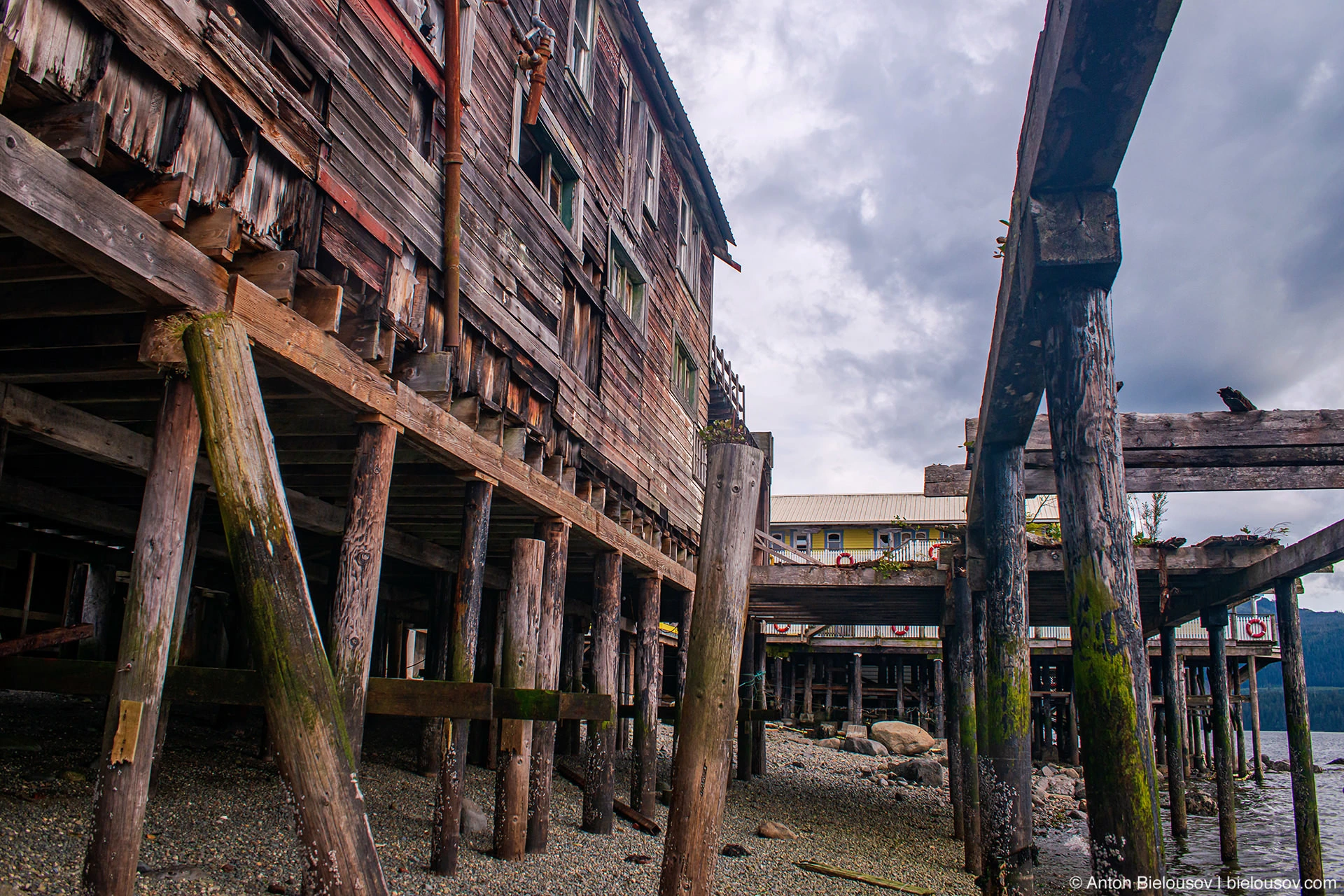
Many of them have hotels, so renting an apartment in Alert Bay is much easier than in Soinchul.
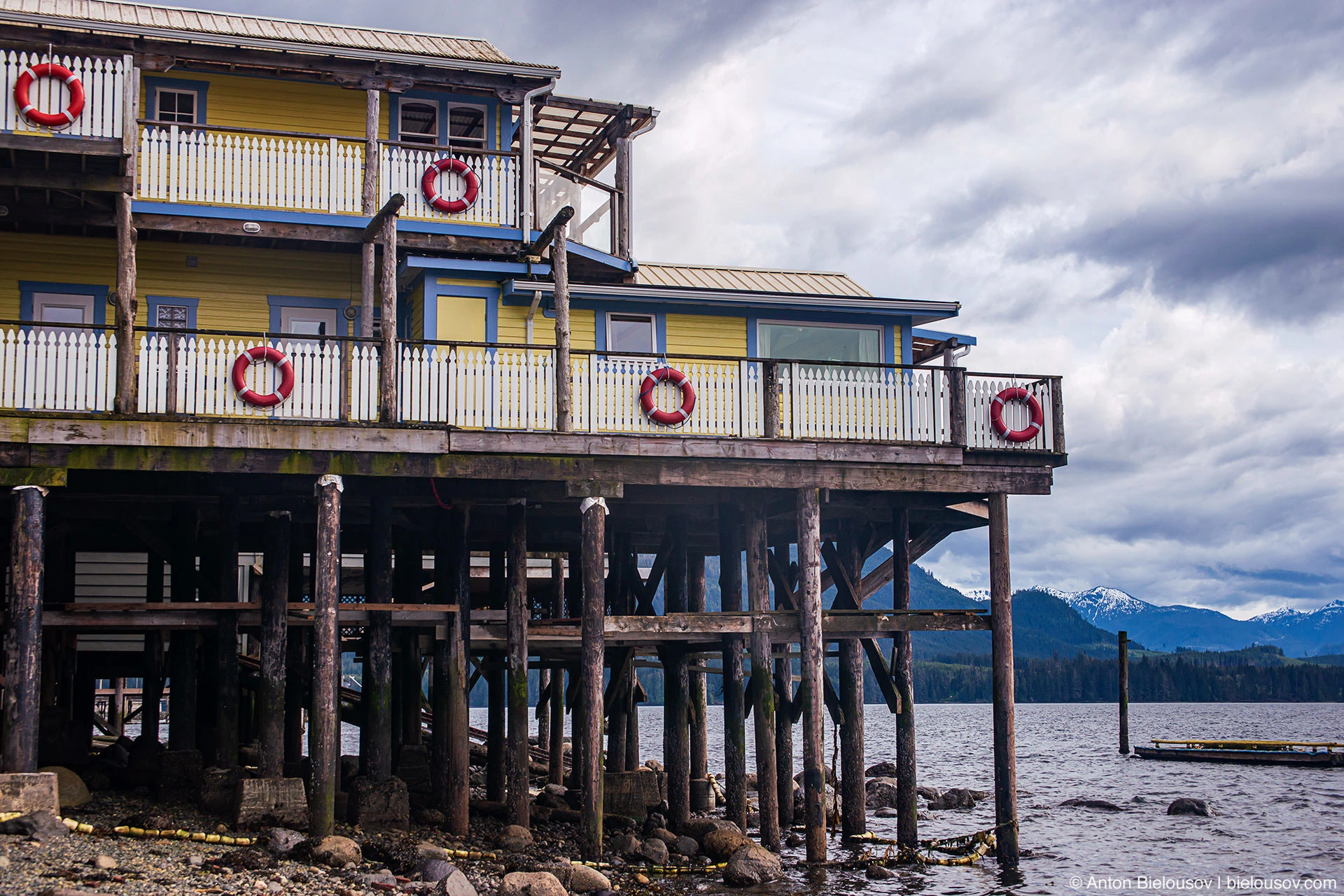
Its Boat Inn Another difference from Malcolm is that there is indeed a fire station, an ambulance, and a bunker-like police station.
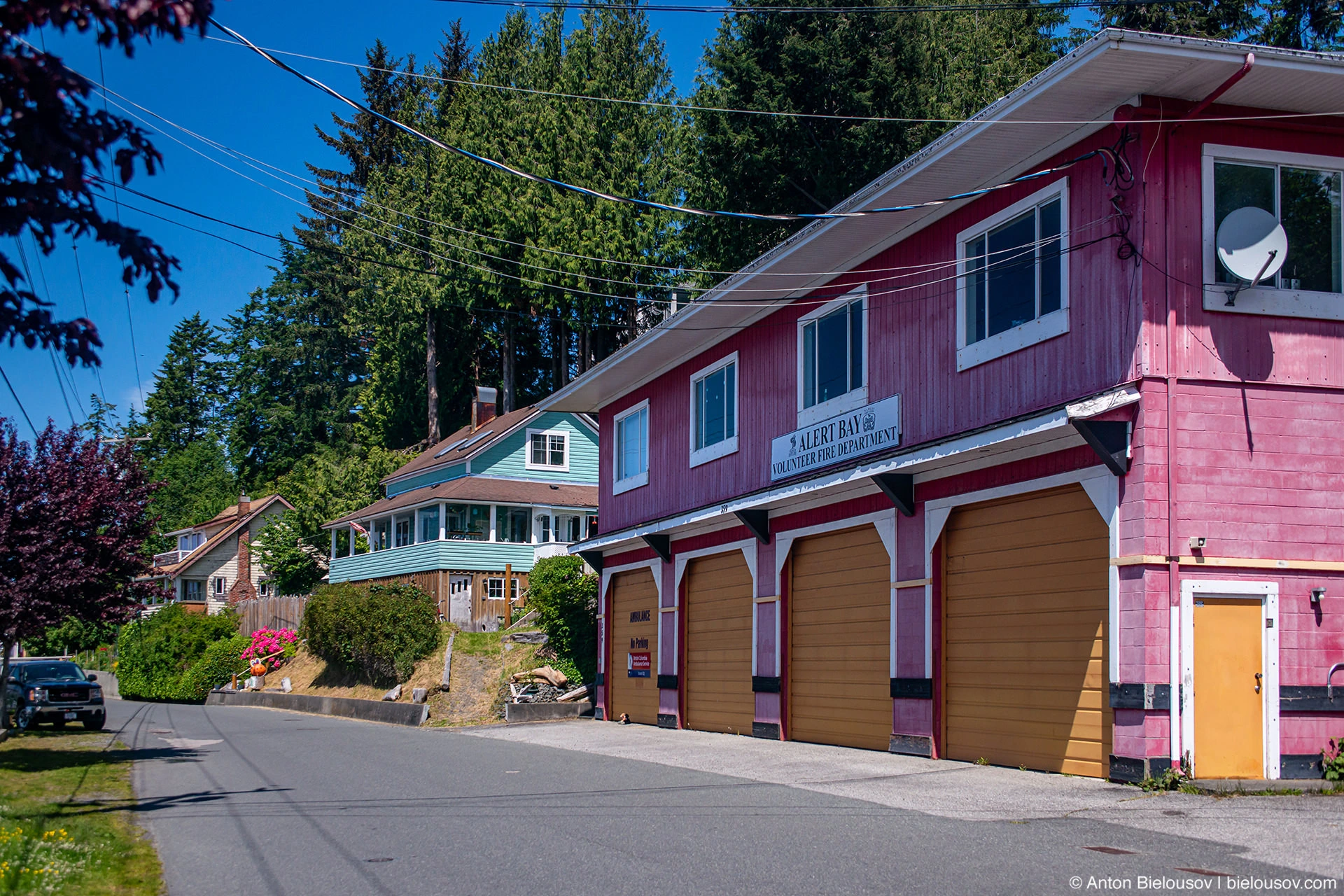
Next to the combined fire and emergency medical service, completely unexpectedly, like for a tiny Indian island in the Pacific Ocean, an old double-decker London bus was discovered.
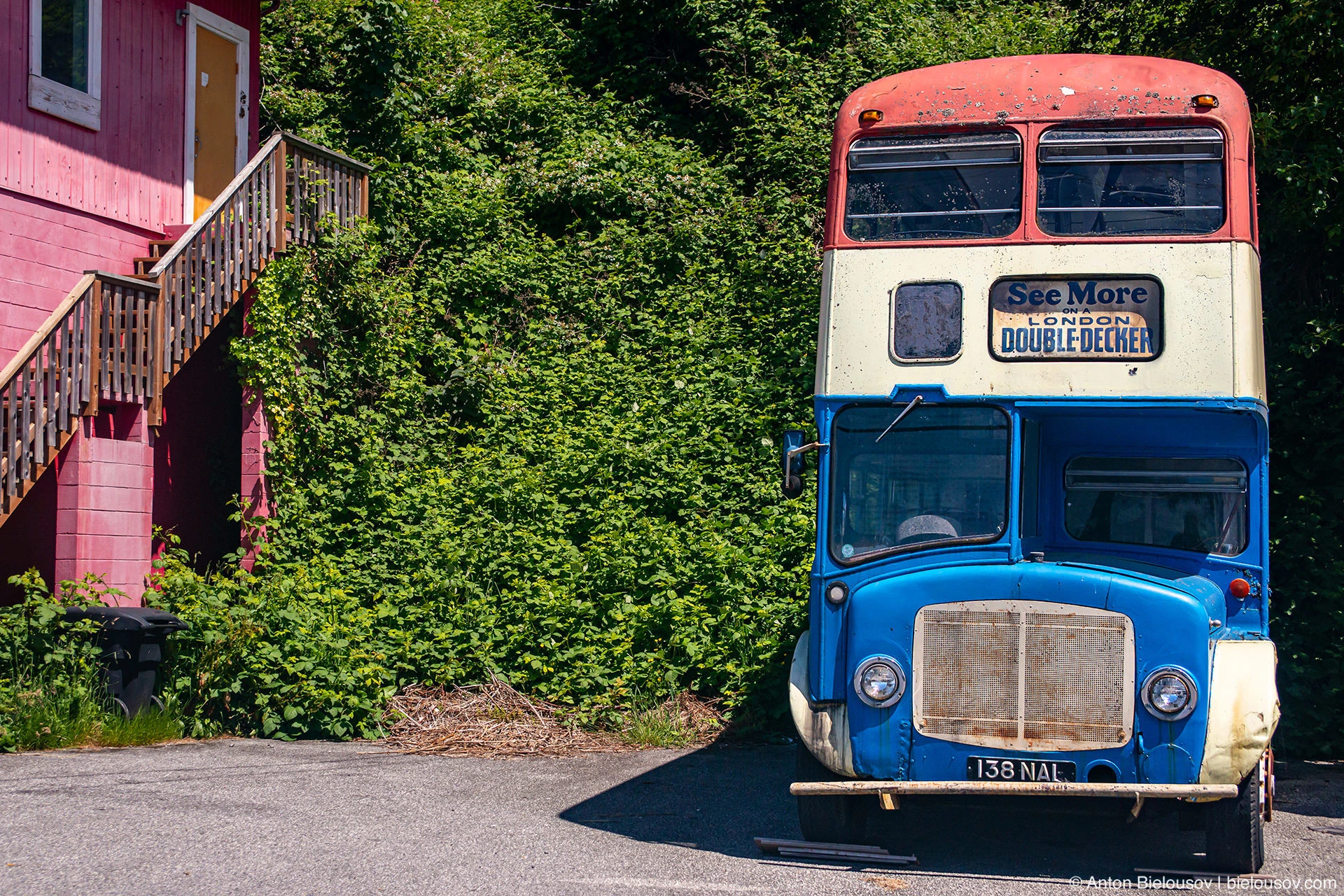
Here is another unexpected combination: a CIA boutique, a second-hand store, and ... a hospital? In one bottle. The font and architecture inspired fond memories of Cuba.
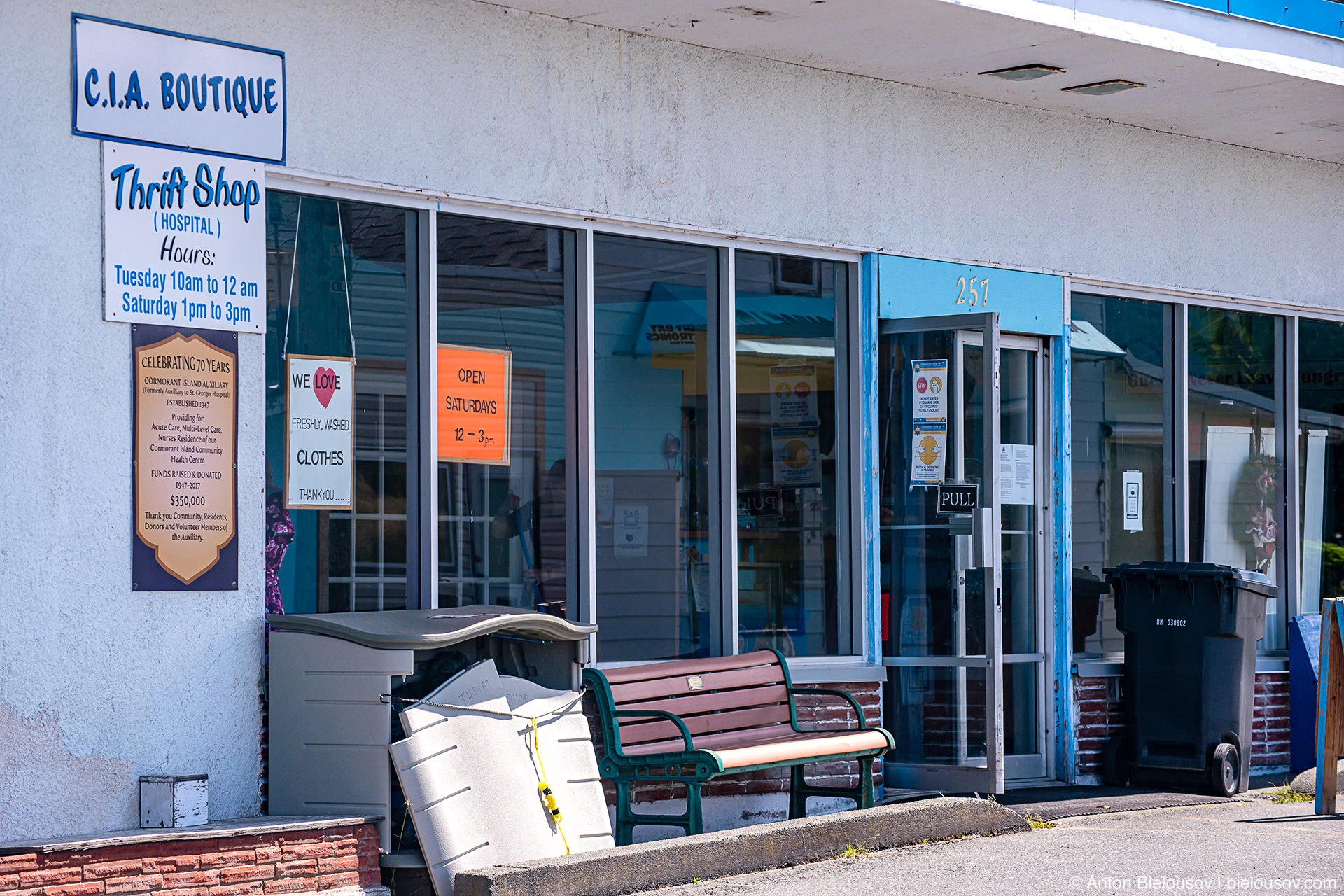
And this, apparently, was once a fishing shop right on the pier, where, under the sign "Today", the today's catch must have been announced so that it could be seen from the shore.
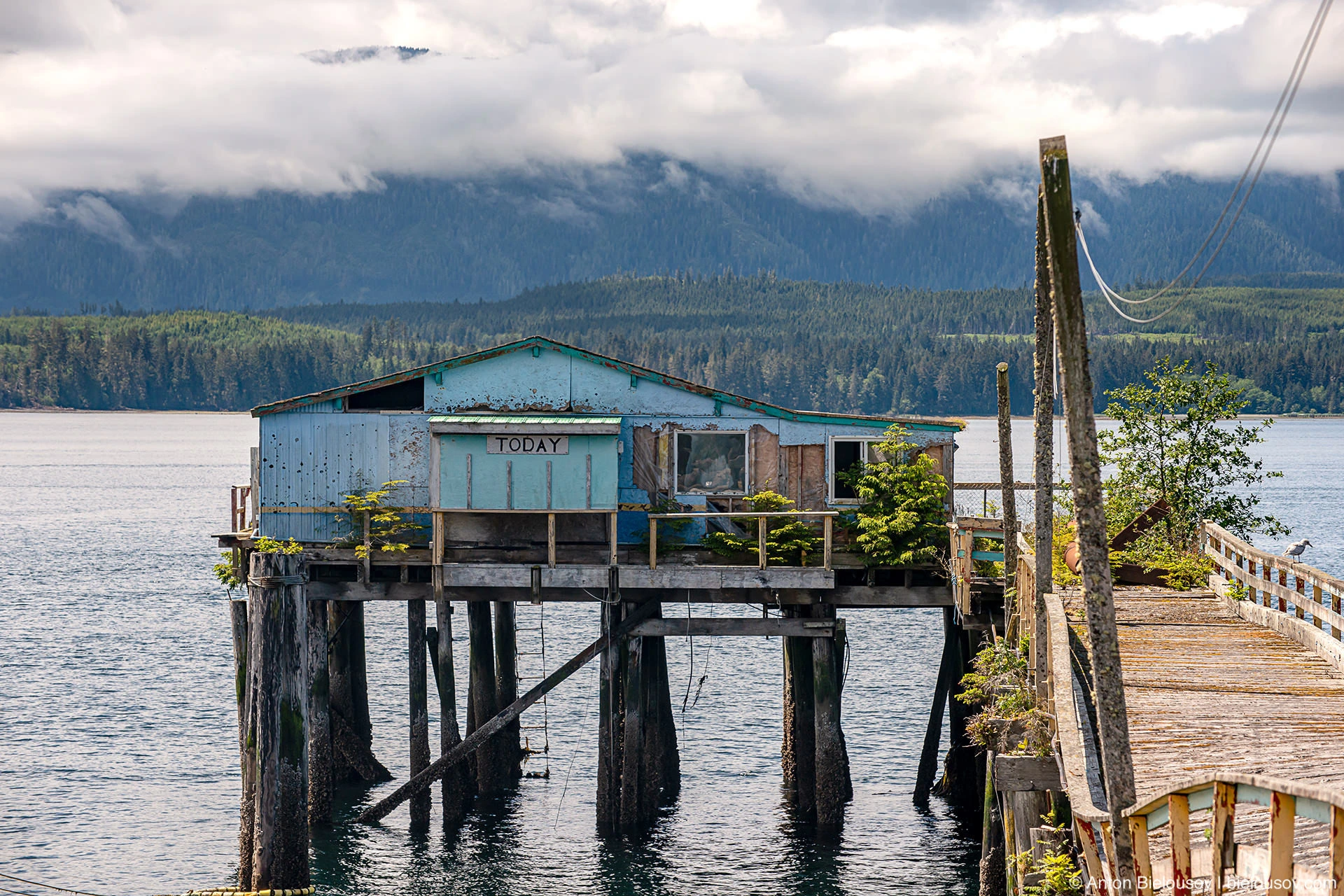
Down the main street - one might say, in the "suburb" of Alert Bay (well, that is, 500 meters from the ferry station) - there are even more hotels and inns.
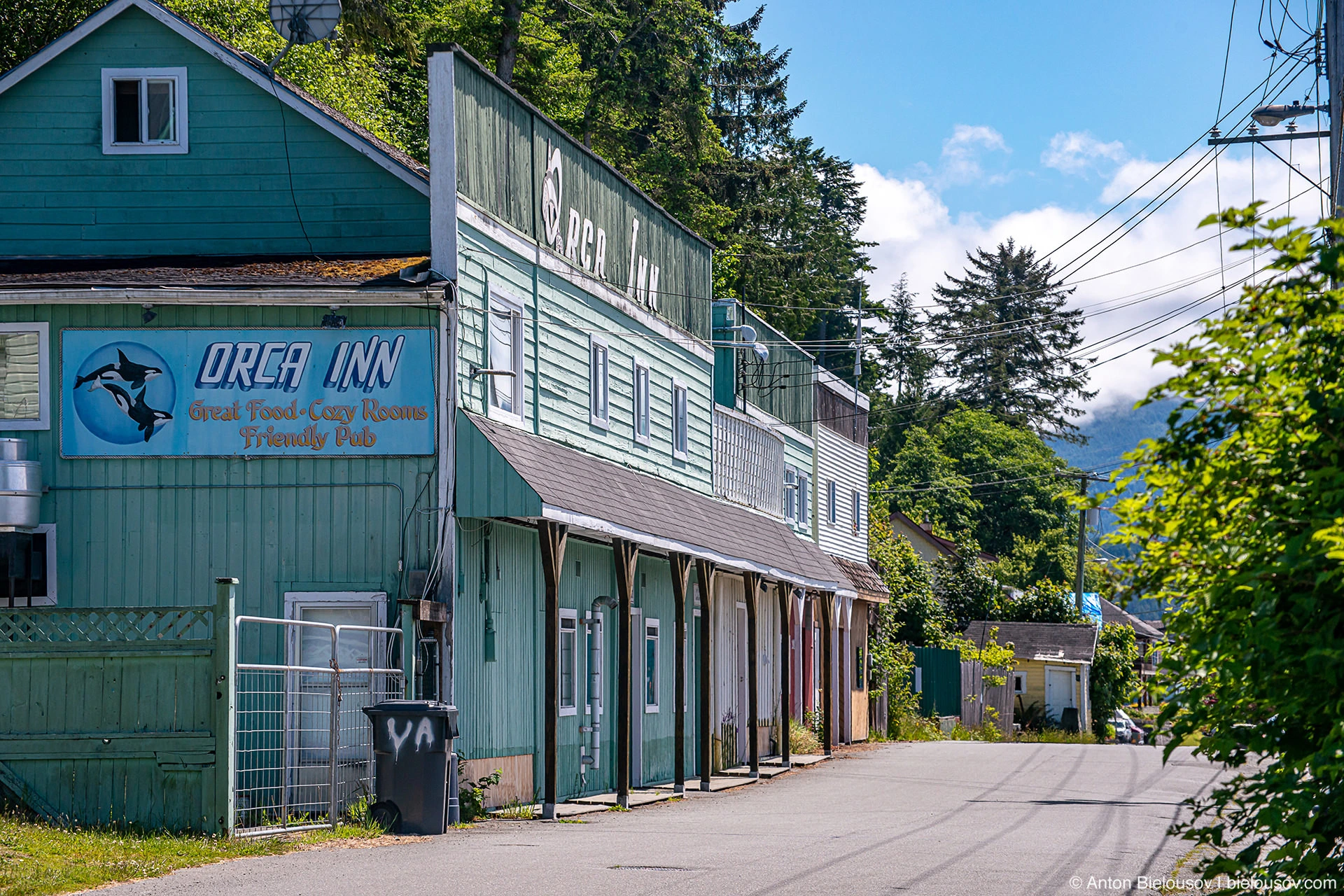
Orca Inn
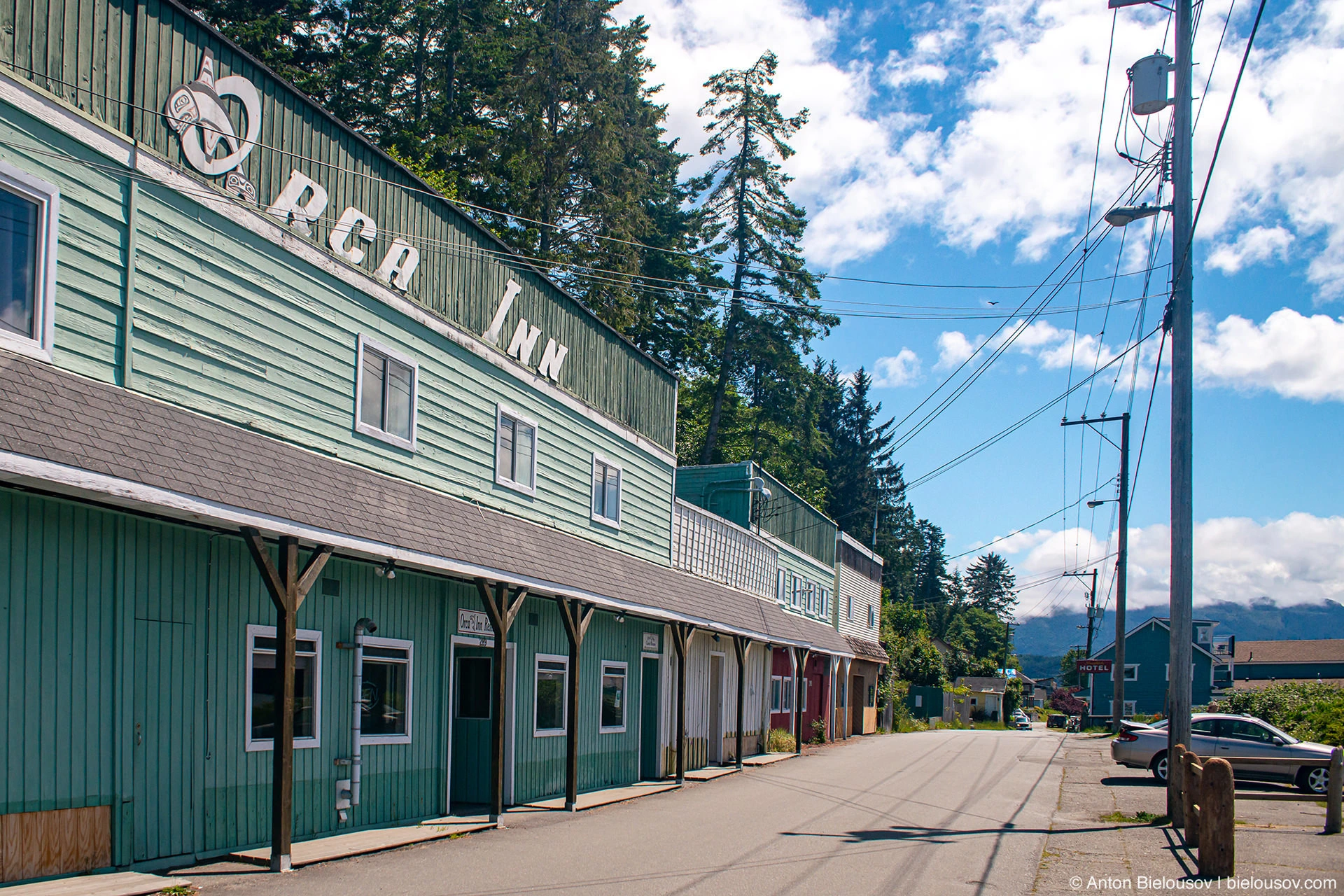
But the further, the more of them are closed - either for a season, or for a pandemic, or permanently.
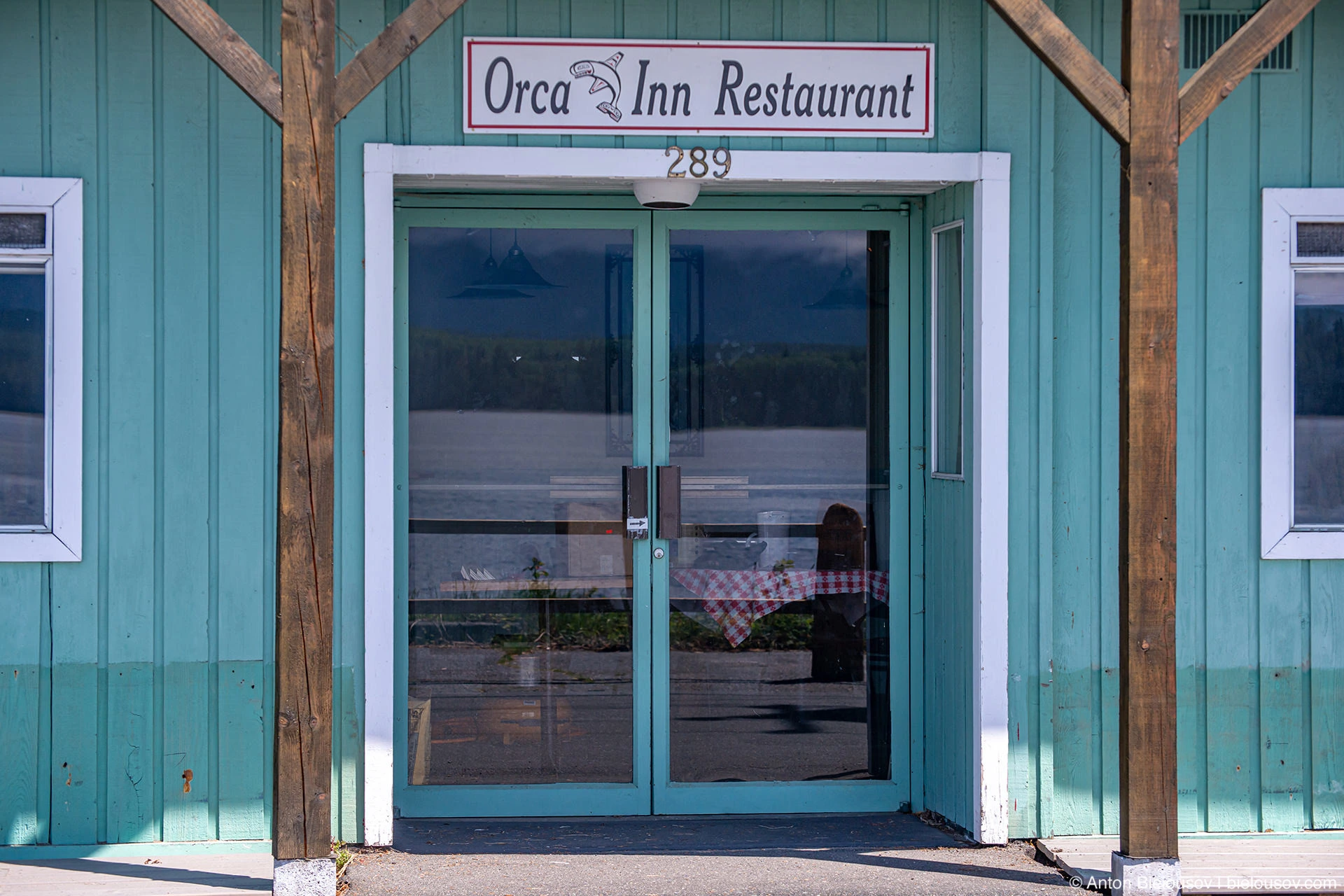
In any case, there is a slight feeling of Pripyat or Fukushima from the kind of restaurants with served tables behind closed doors without a menu, without hours of work. And, just in case, appetite wakes up - probably, to gorge on for the future. In total - in the middle of a weekday - I found only 2 working restaurants where you could eat inside (in the provinces then they were just allowed to serve indoors) - and the closest of them (Pass'n Thyme Inn Restaurant) was definitely not cheap, but definitely higher level than I generally expected from a small Indian island. With a craft bun and a record amount of meat in a hamburger.

Have a snack - you can and at the cemetery. It is also on the main street here and in itself is worth going here.
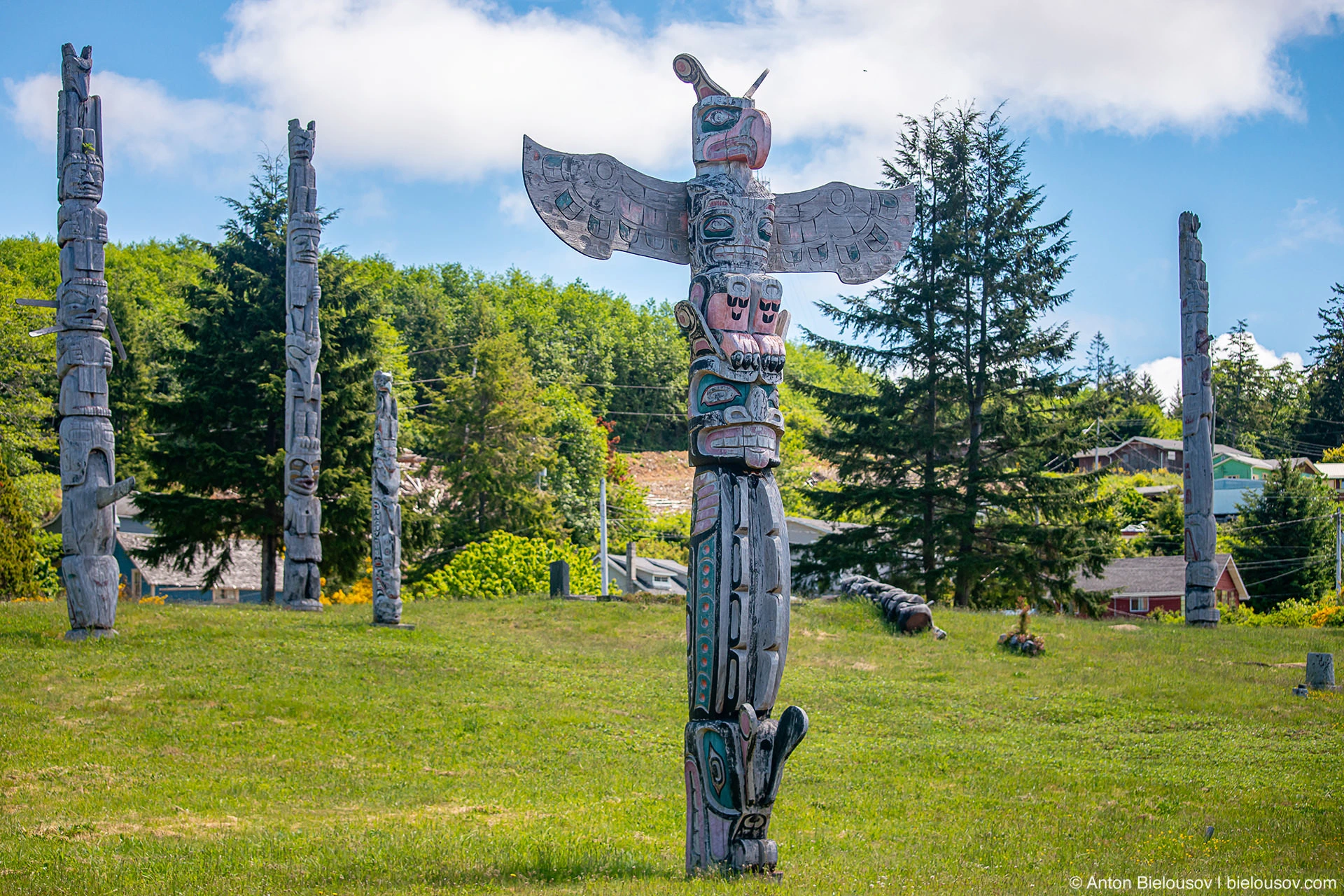
It is said that people from the Namgis tribe brought the dead to the island to bury the dead for several thousand years before settling on it. Today, Namgis Original Burial Grounds is the only place on the island where the original totems remain at the burial grounds.
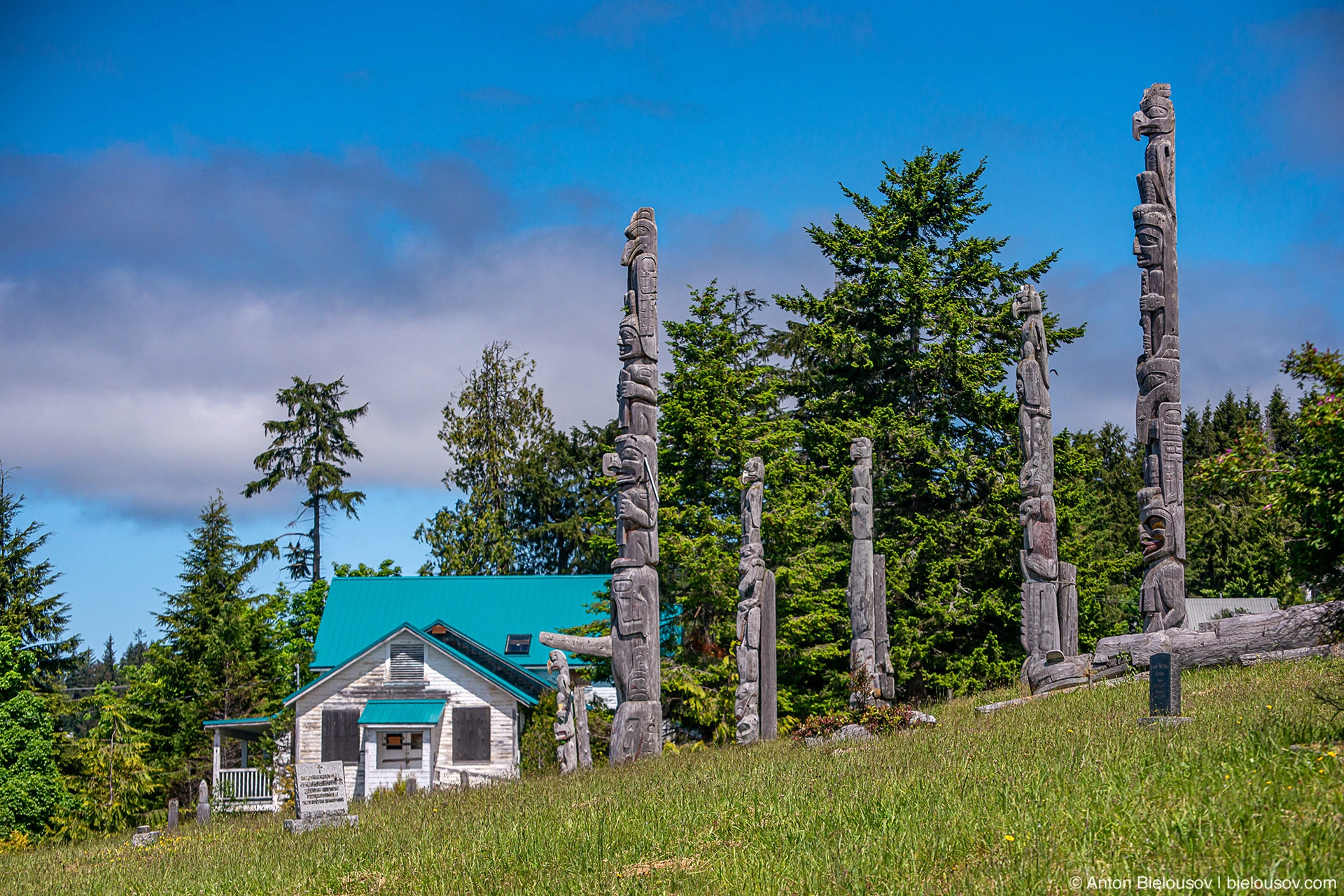
An absolutely gorgeous place. White-faced people are not allowed to enter the cemetery, but it is perfectly visible from the main street and from the embankment. But at the cemetery itself - not a soul.
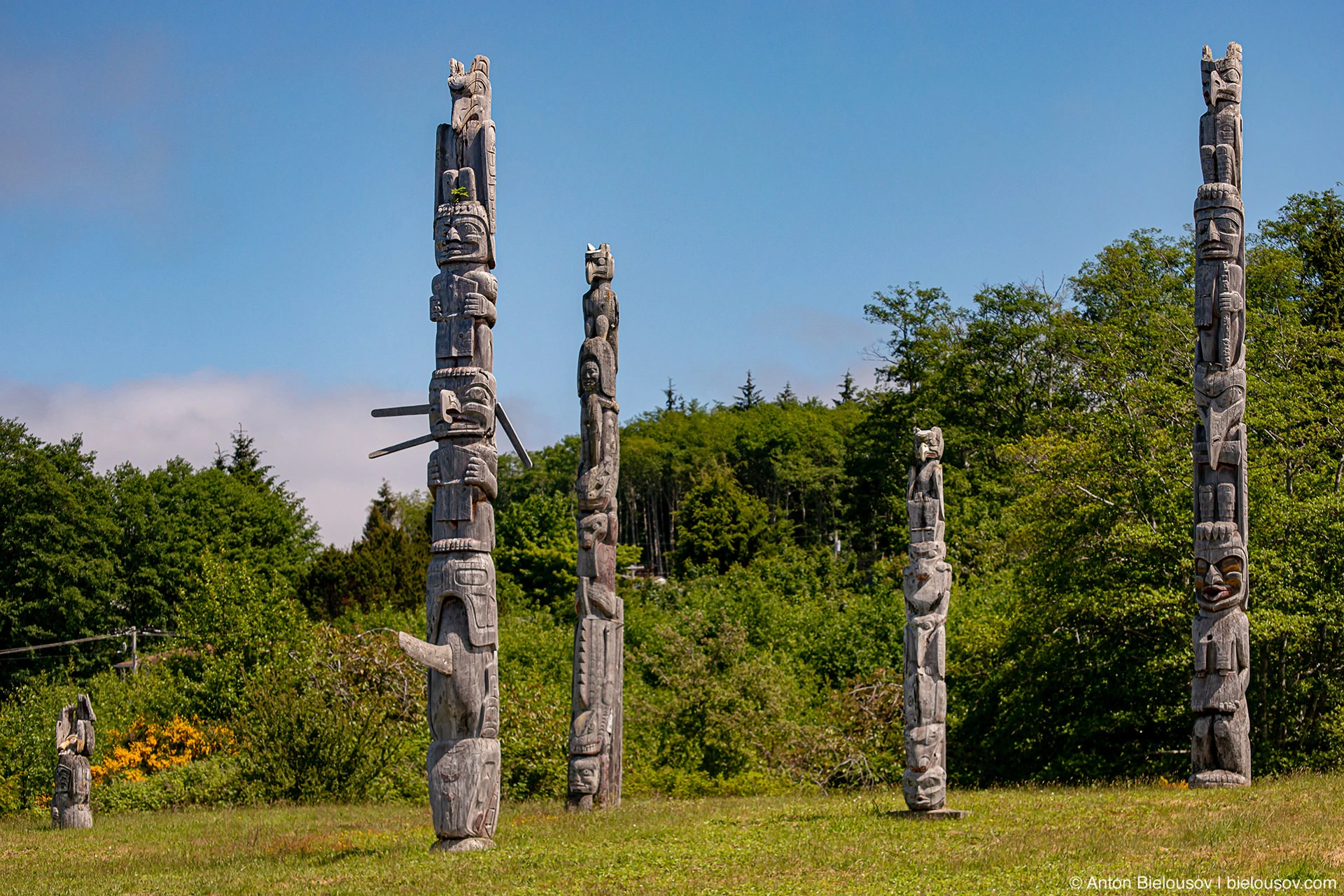
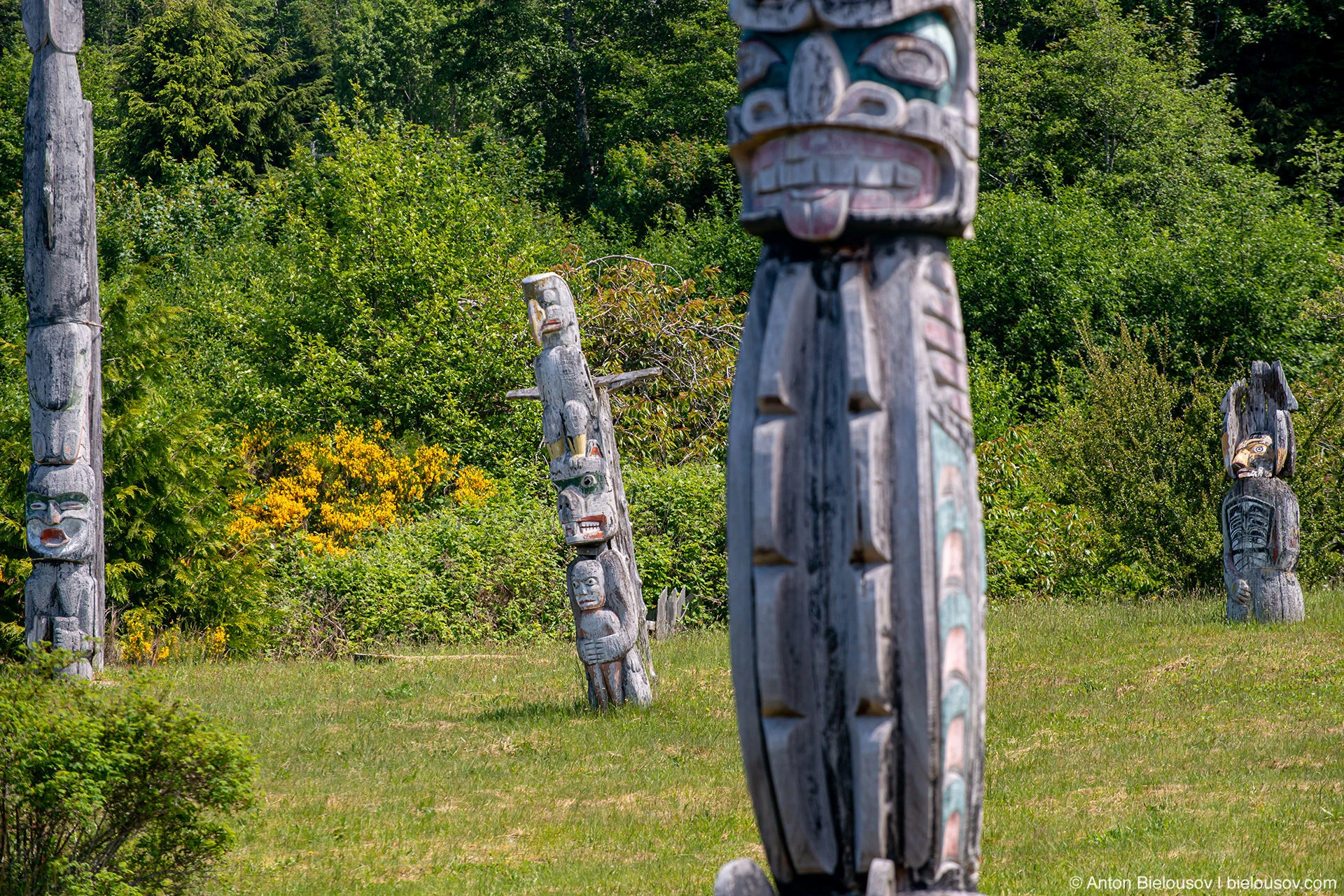
Only a crow's cry stands - there was some kind of serious struggle for territory going on - but this is only a "plus" to the atmosphere for such a place.
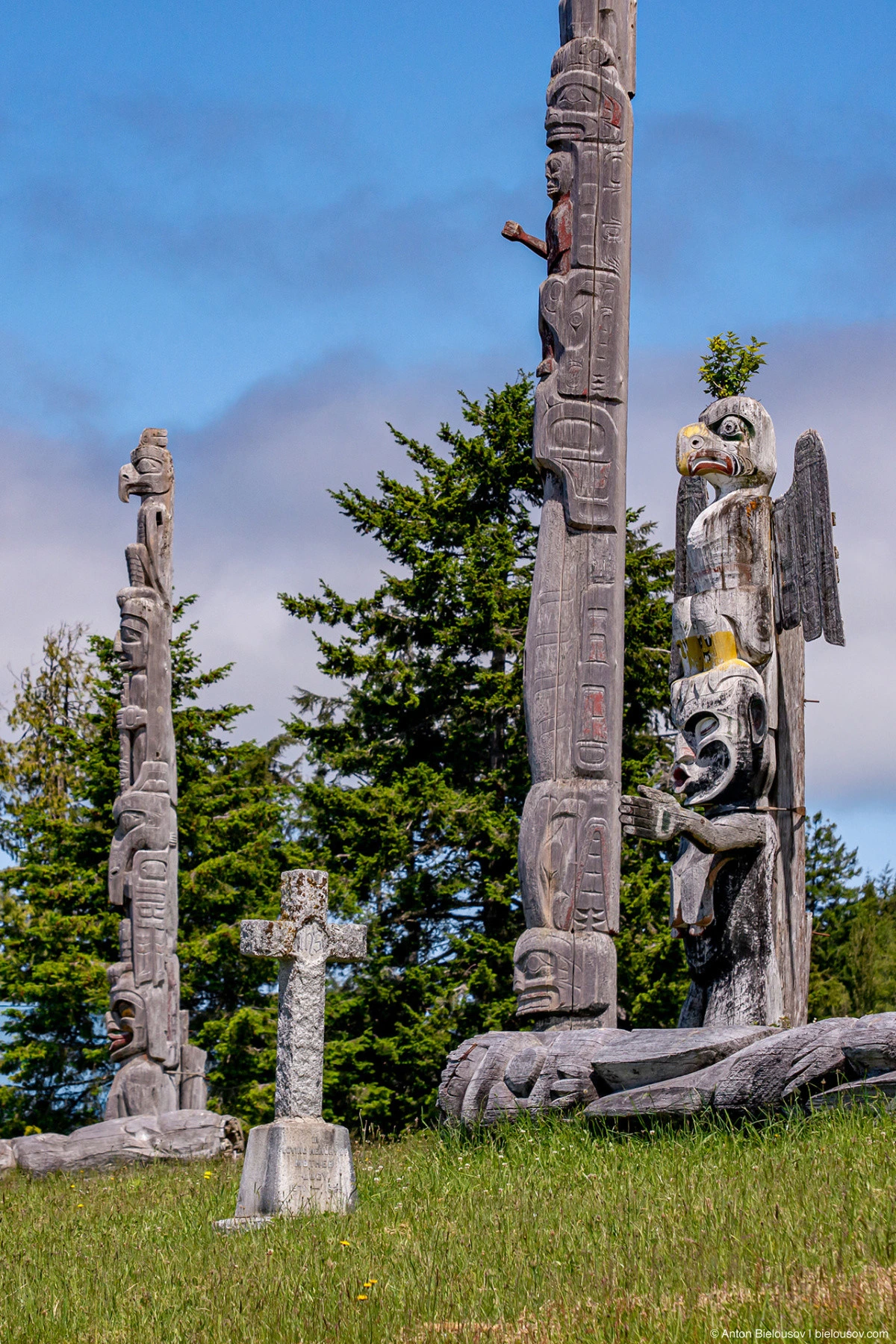
Seriously, I just stuck there on the sidewalk - not taking pictures or noticing anything around, but just absorbing this atmosphere. The hardest thing to understand is that this is not a museum installation, not totems brought from everywhere for parade like in Stanley Park in Vancouver. These are totems in their, so to speak, natural habitat, as it probably used to be in many places, and now there are only a select few left, like here in Alert Bay.
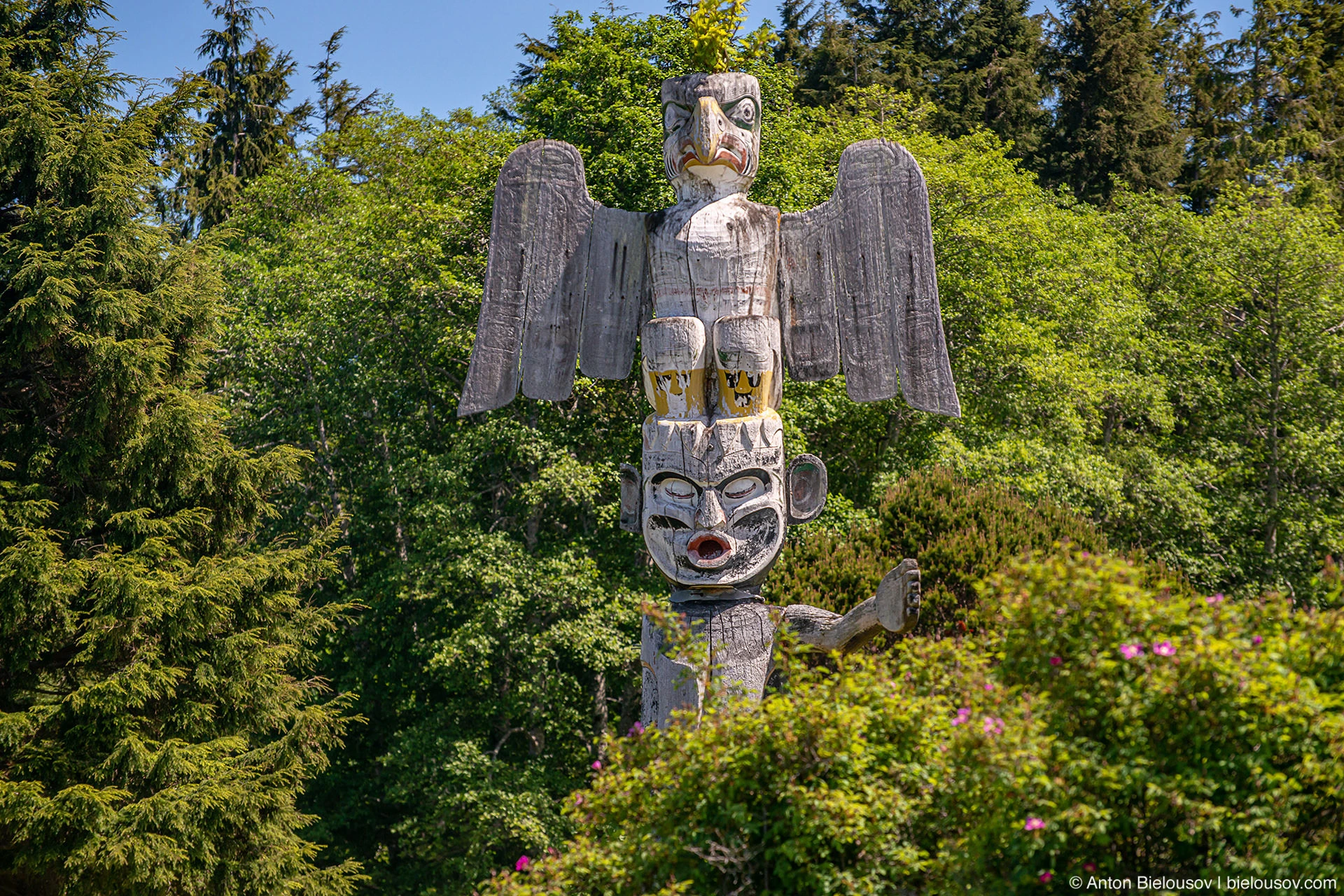
Like open family crypts, these totems tell the story of each individual clan. Except for the tallest totem we saw from the sea - this one tells the story of an entire commune.
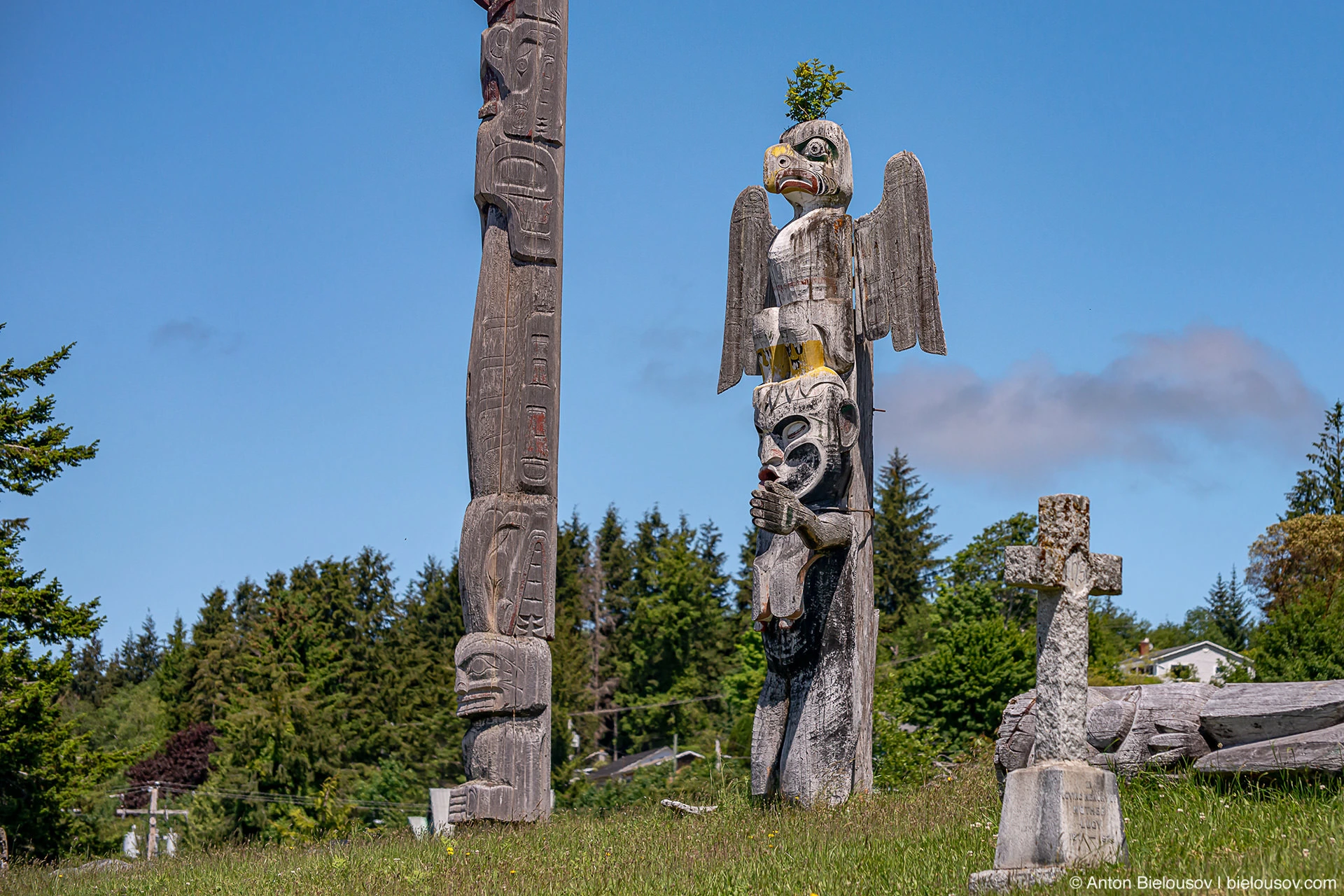
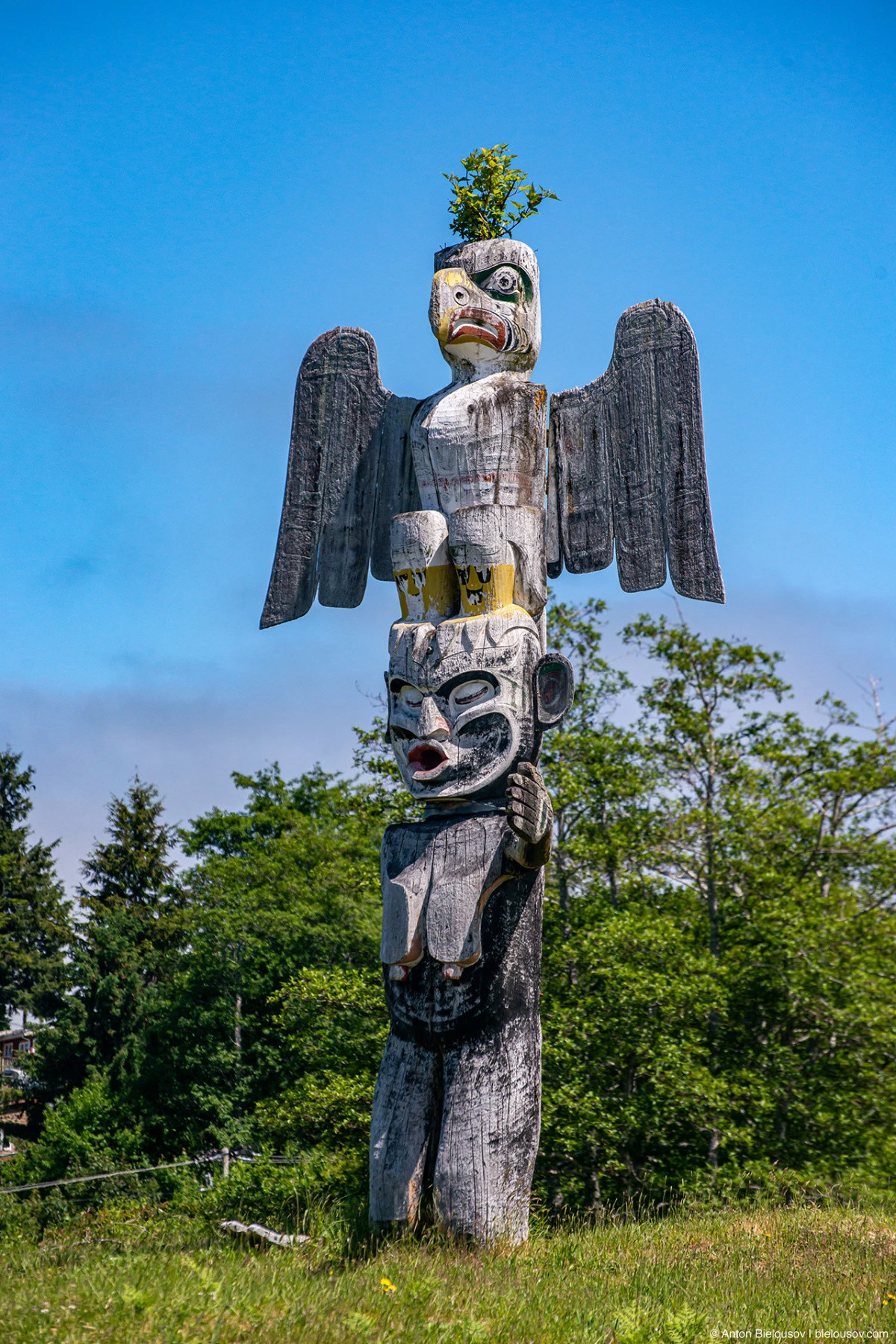
Some totems are painted, others are not. Interestingly, this is a sign of the wealth of the clan?
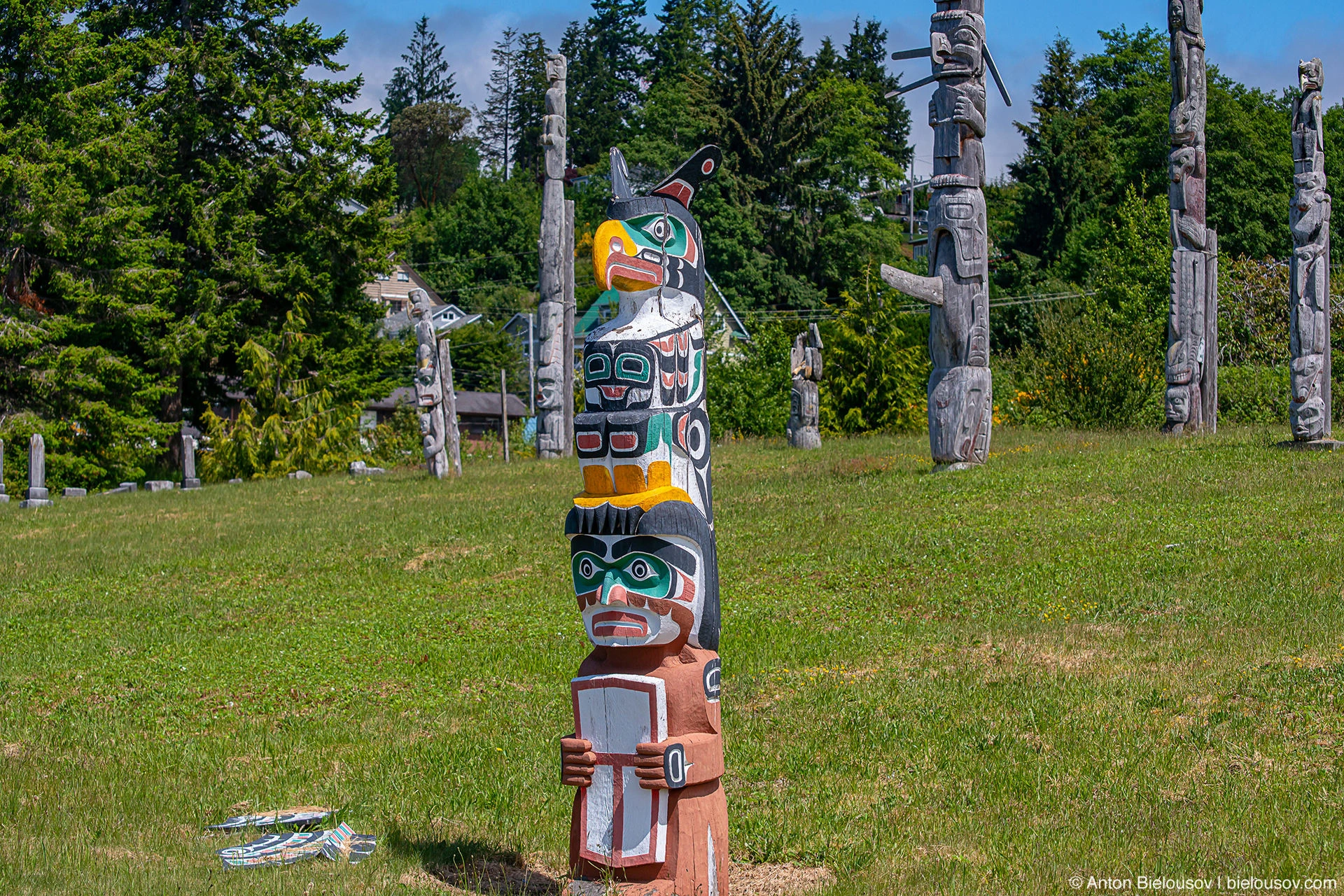
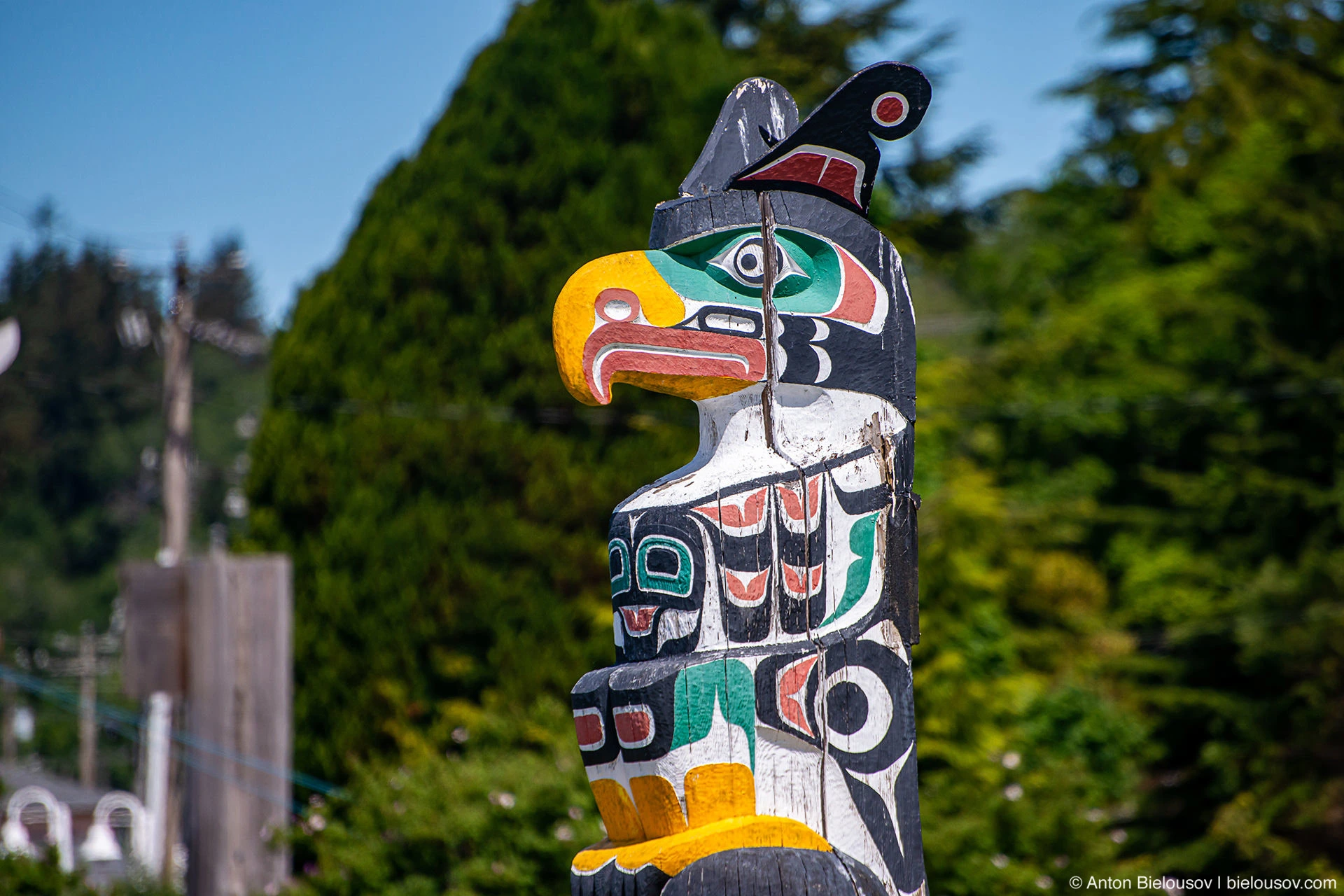
It seemed to me that some of the characters have facial features and the shape of the mustache more reminiscent of Asian.
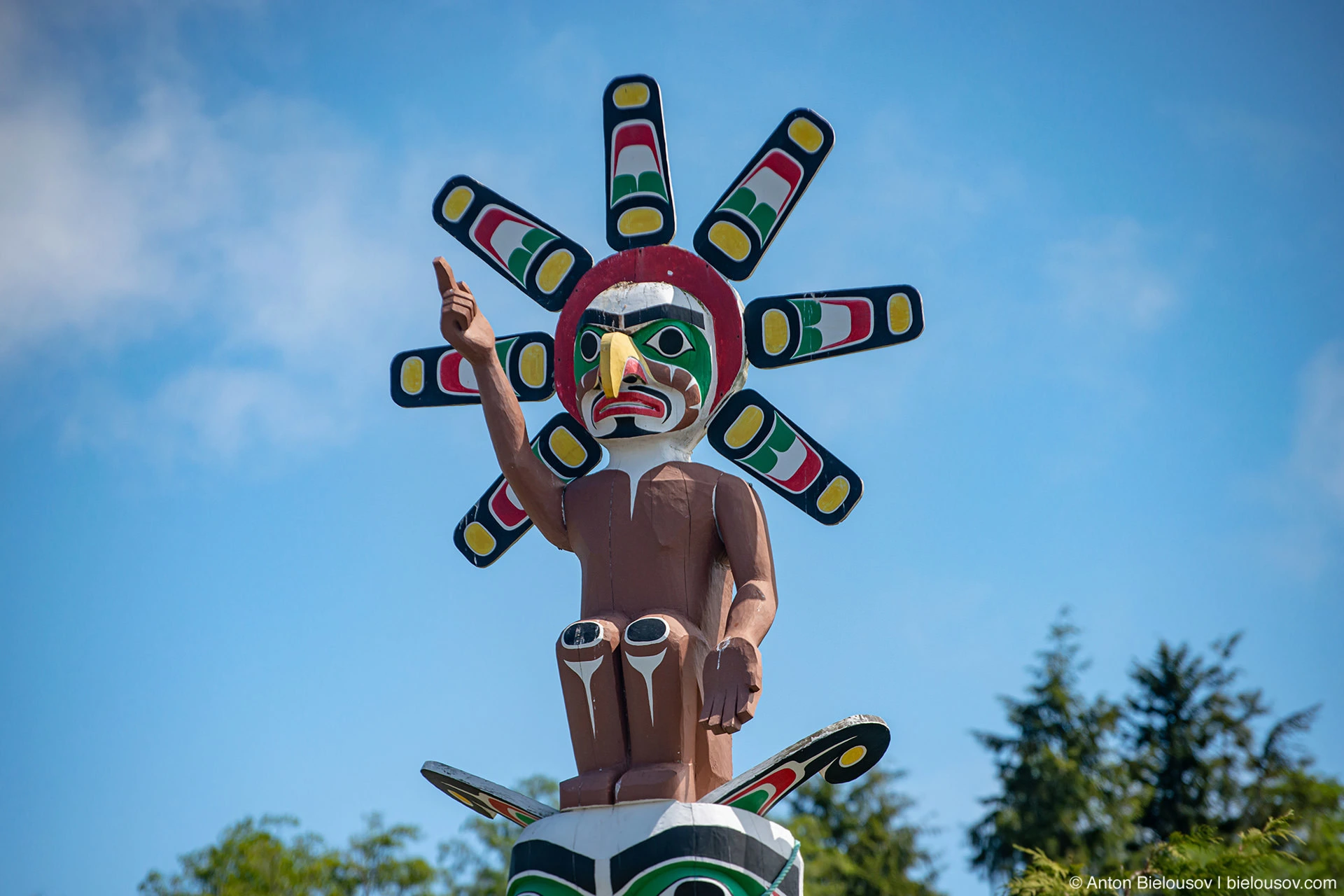
In order to resist the winds from the sea, some totems on the front line stand with guy wires.
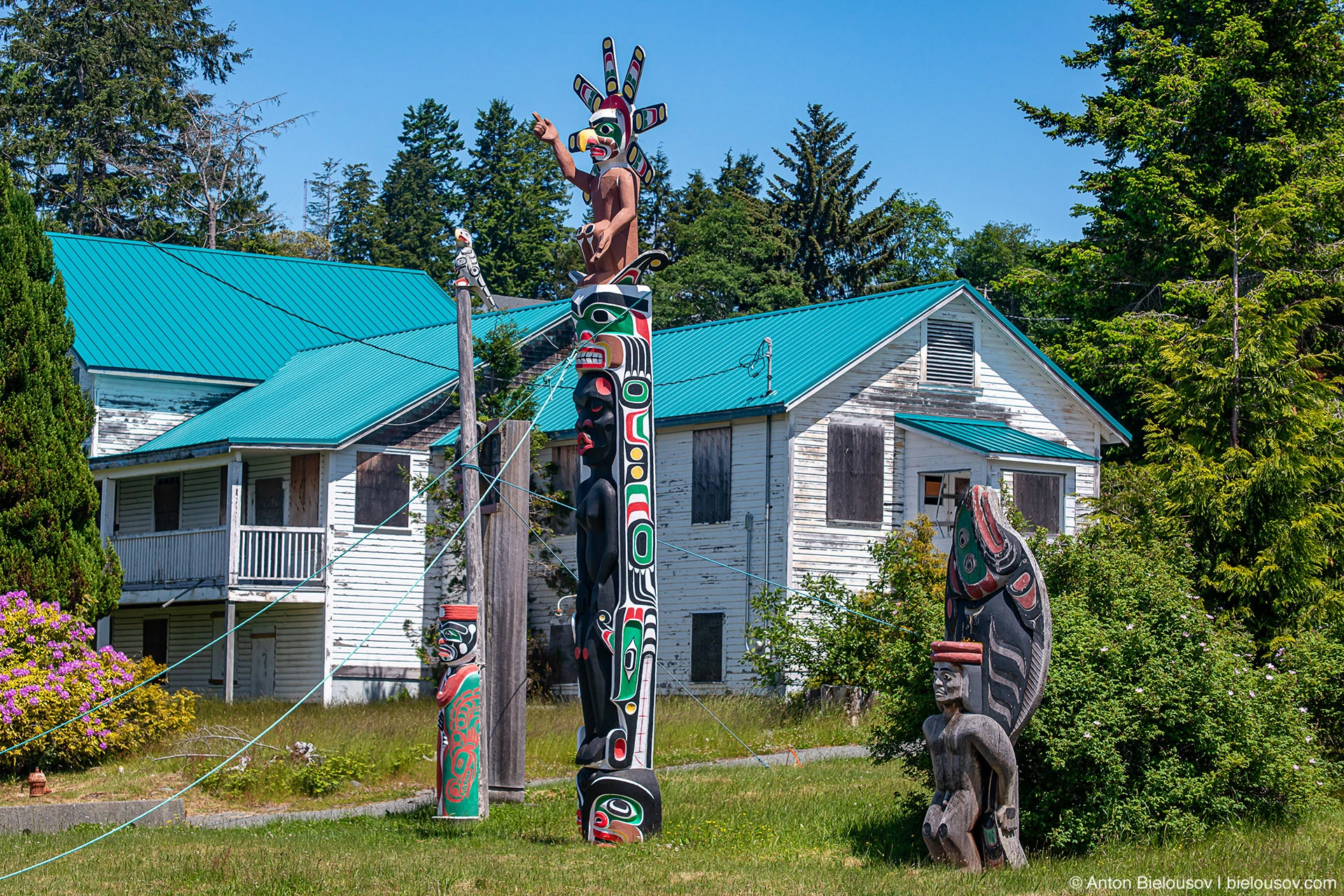
The most confrontational, perhaps in the light of recent news, is the neighborhood - Indian totems and quite European tombstones, a couple of them even with a Catholic cross.
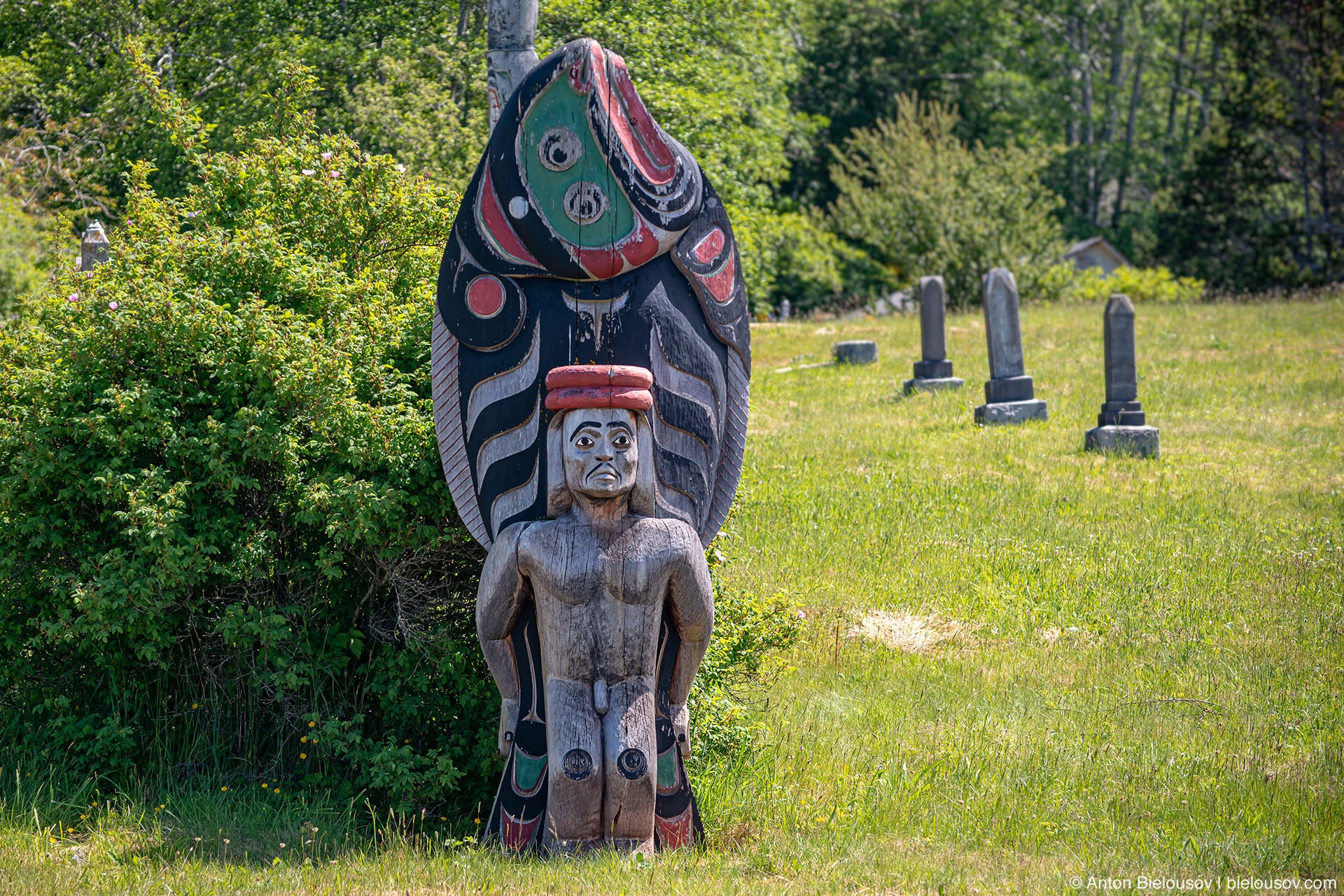
The inhabitants of Namgis Island know firsthand about boarding schools for Indians, one of them (and far from the most sinless) is St. Michael's Residential School - was here on the island, it was demolished a few years ago, even before the hype around the discovery of unaccounted graves in their territories arose. However, here on Cormorant everything is already in the graves, it was, after all, an island-cemetery for not thousands of years.
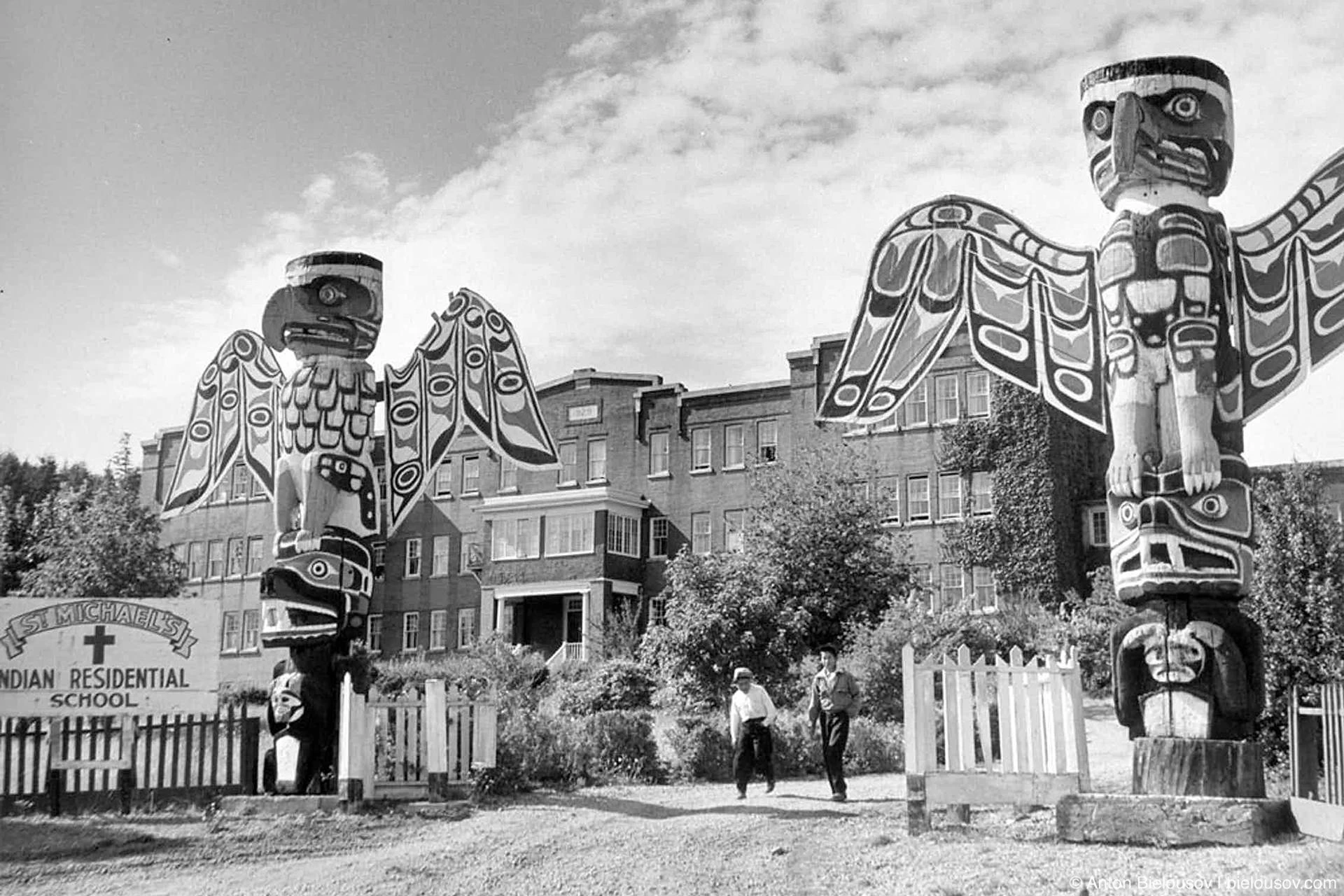
St. Michael’s Indian Residential School entrance, with two students on the driveway, Alert Bay, British Columbia, is shown in this 1970 handout photo. THE CANADIAN PRESS/Library and Archives Canada Today, on the territory of the boarding school, there is a new cultural center with a museum, where there is an exposition dedicated to this school. It seems that the circle has closed.
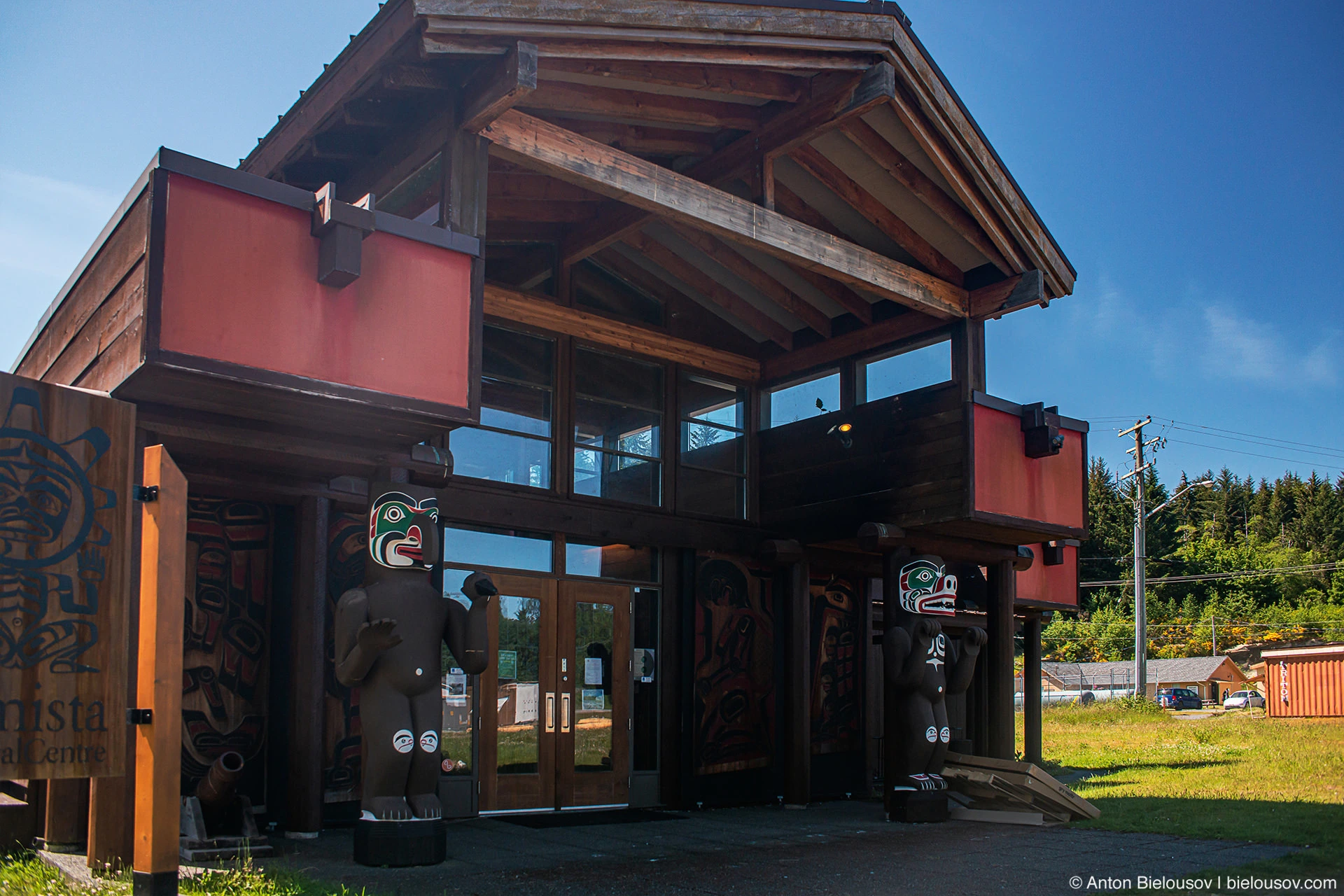
And right behind it is a containerized field site for vaccination and testing for COVID-19. Back in the spring (2021), when the compulsory voluntary vaccination company in Canada was just taking its first modest steps, all the Indians on the island were already, as some say, “augmented” in full.
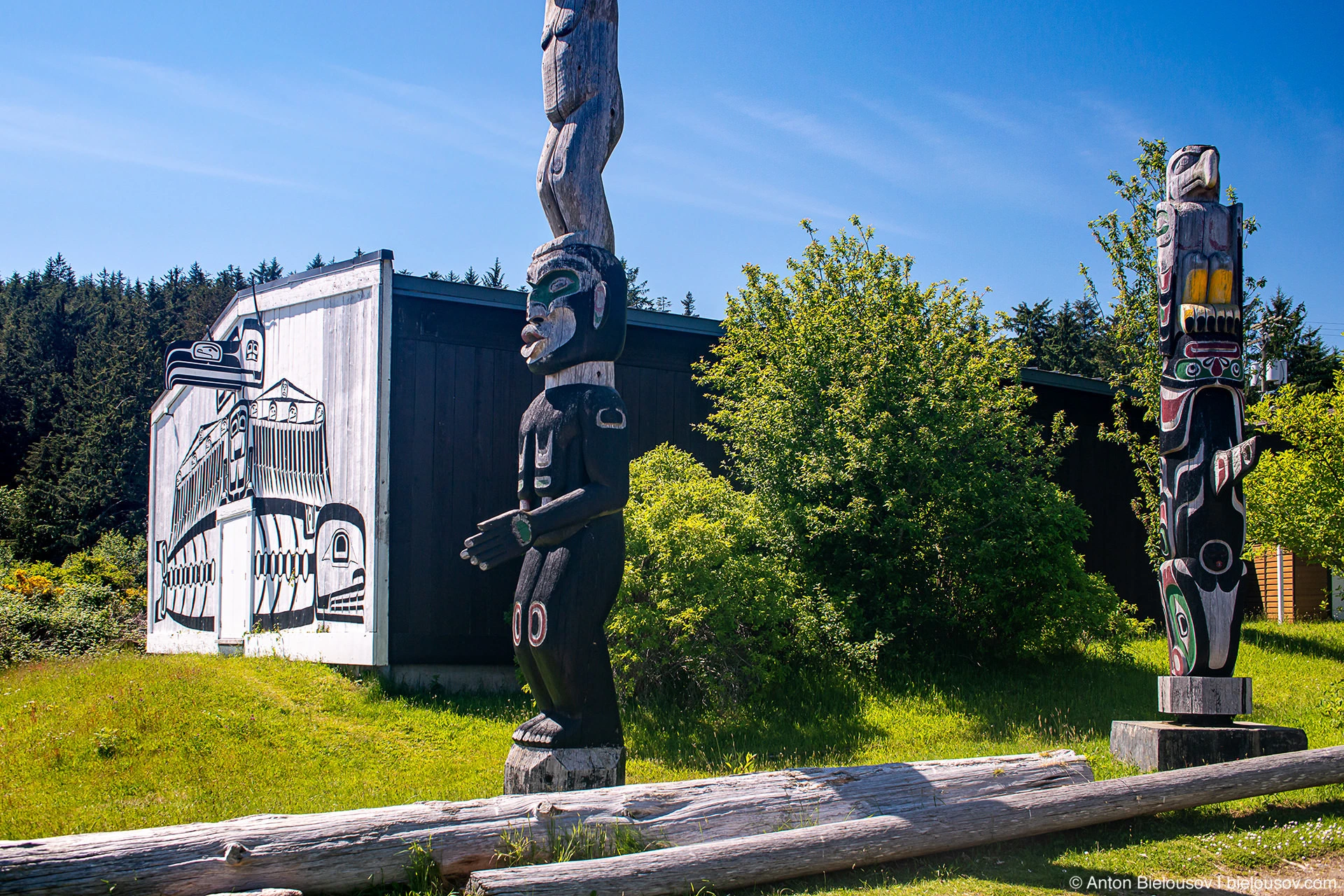
In the context of the boarding school, the origin of the sign indicating the entrance to the clinic, but installed in the bushes in front of the vacant lot, which was still a mystery to me, immediately became clear.
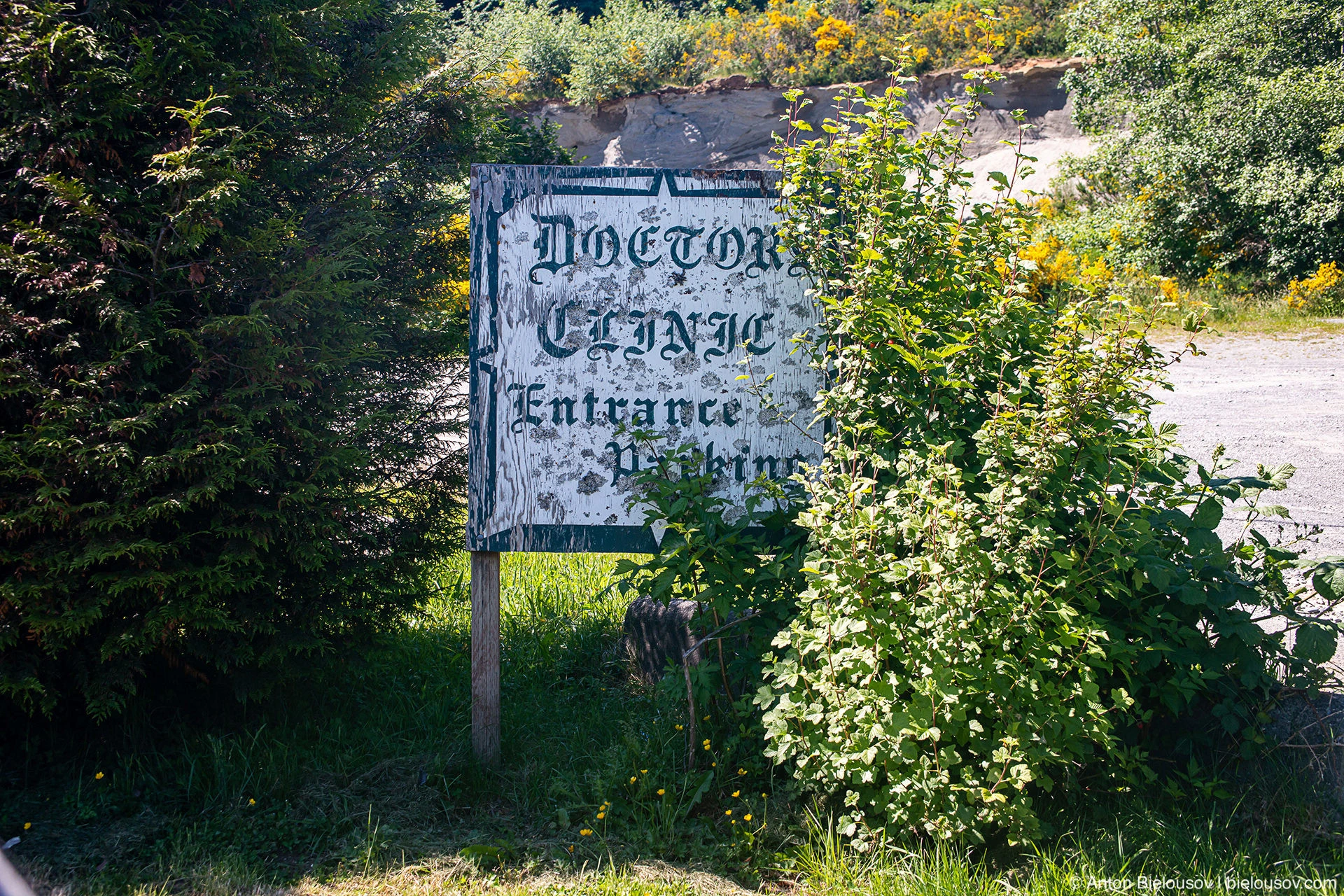
Despite the full vaccination, the Indian commune - Whe-lal-la-u (just a chic name, I think) - is closed to the public.
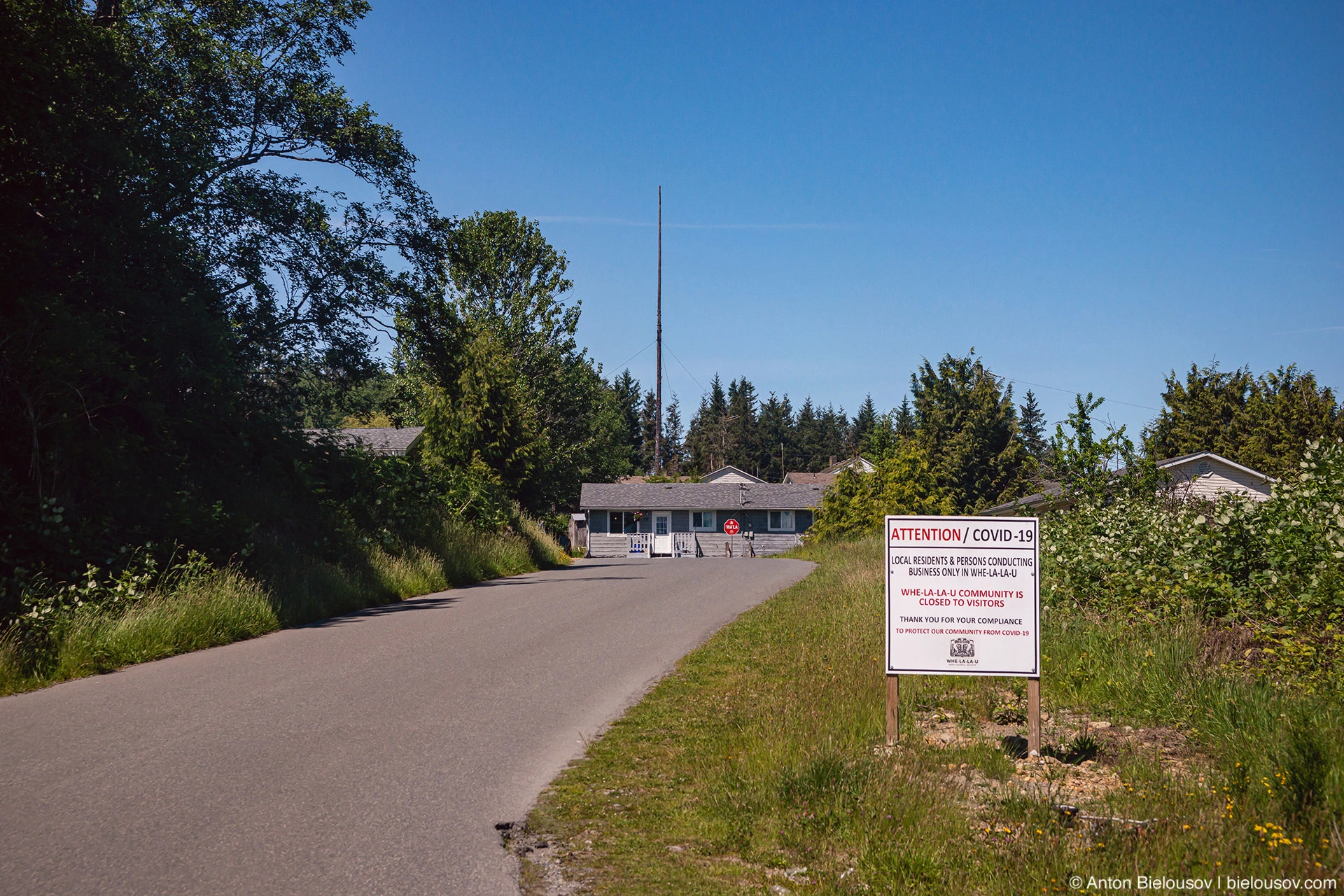
Therefore, Wa-la, pale-faced! - so far, this is the closest distance to which you can approach the tallest totem and the Big House.
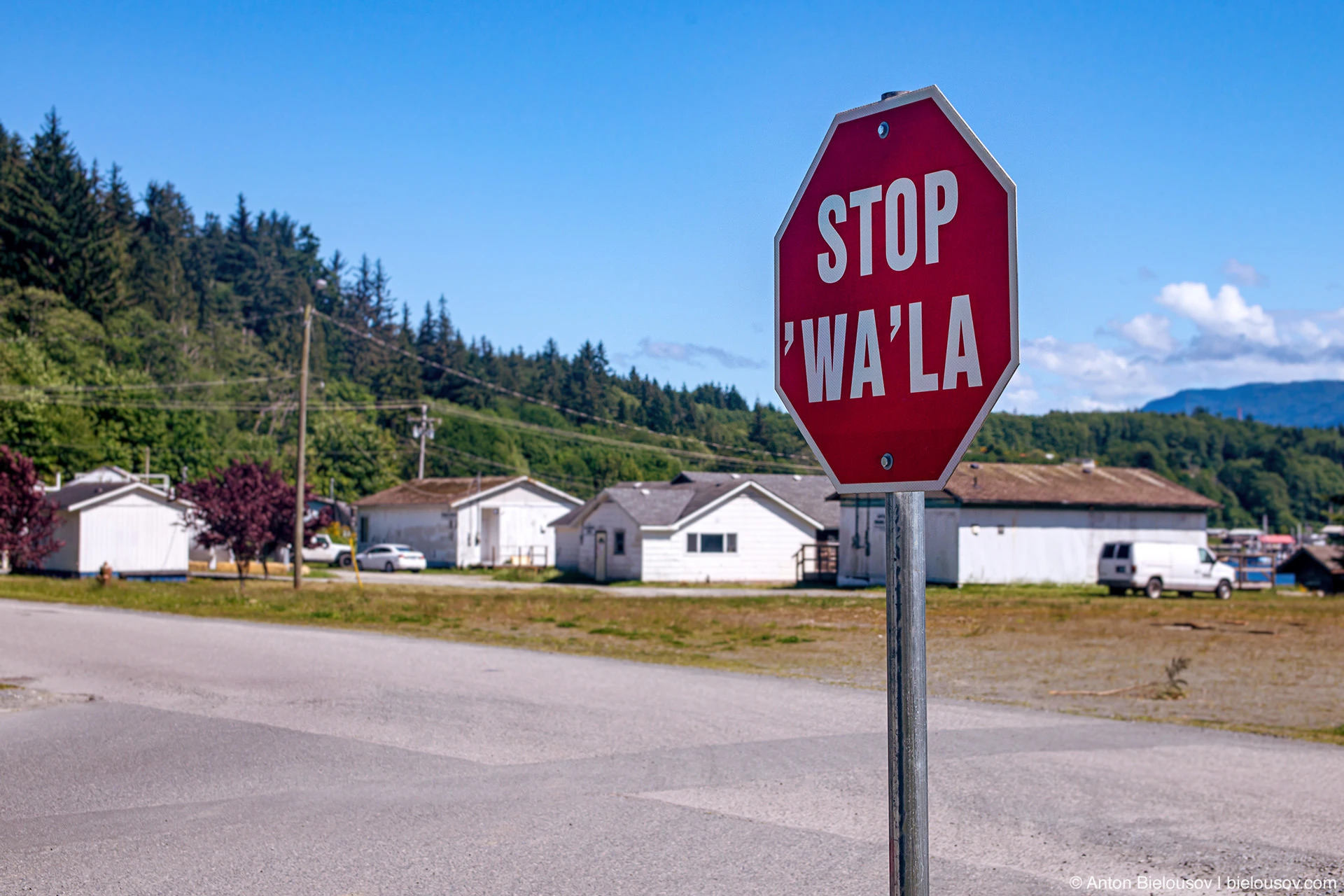
But here and on Front Street there are a lot of interesting things, I decided not to be impudent this time.
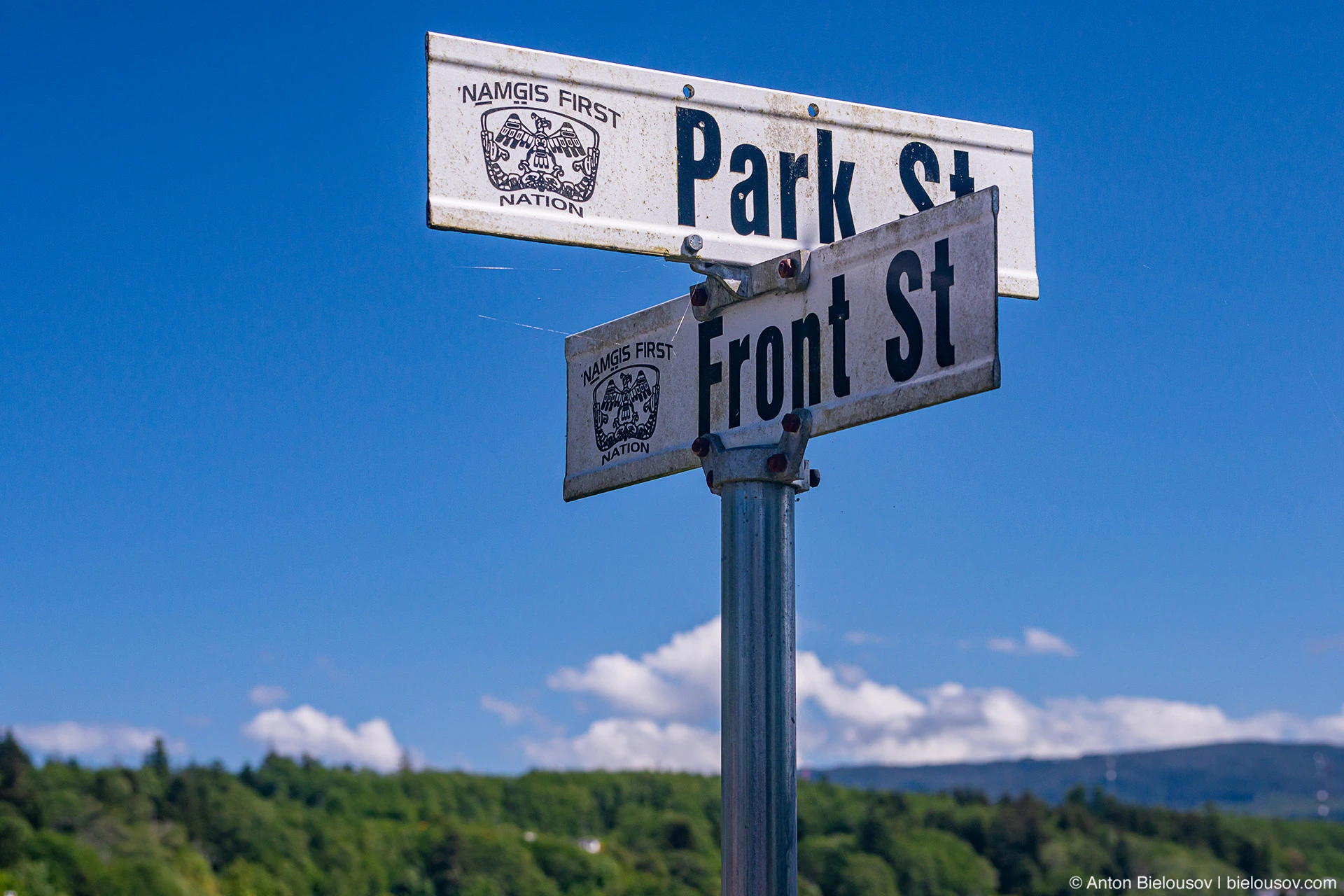
If you have played computer strategies, then you probably know that one of the first buildings is a place for crafts, while workshops are not available. Well, that's it!
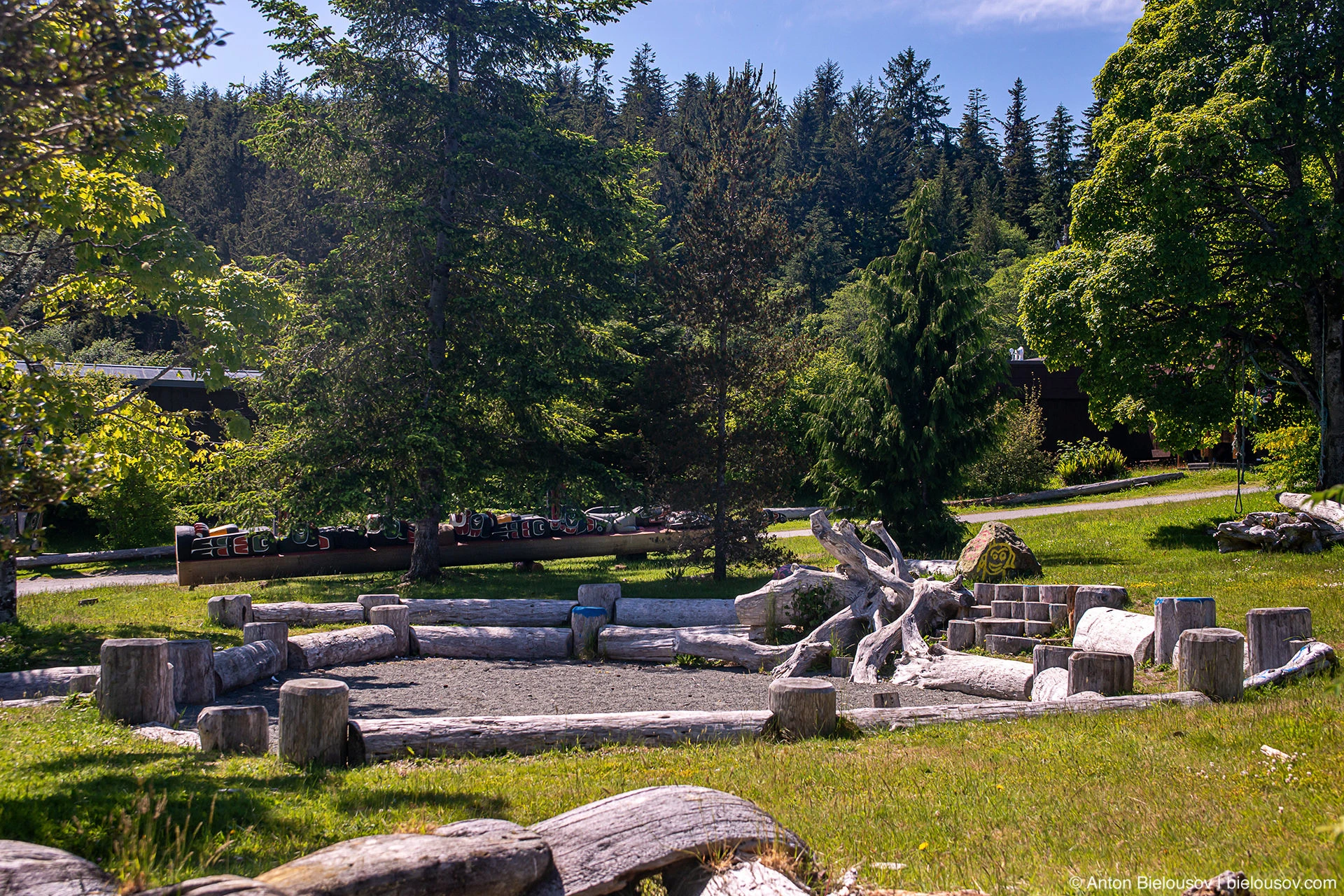
Here, the totems cut, and you can stir up a small power-wah. An Indian in a very unconventional store told how they still consider Malcolm Island theirs and how bad Finns came and took it over. In confirmation of his words, somewhere on the island there is a stone on which his ancestors, who in pre-Columbian times sailed to hunt the island, depicted a face. I never found the stone on Malcolm, but now I imagine that it looks like this and nothing else:
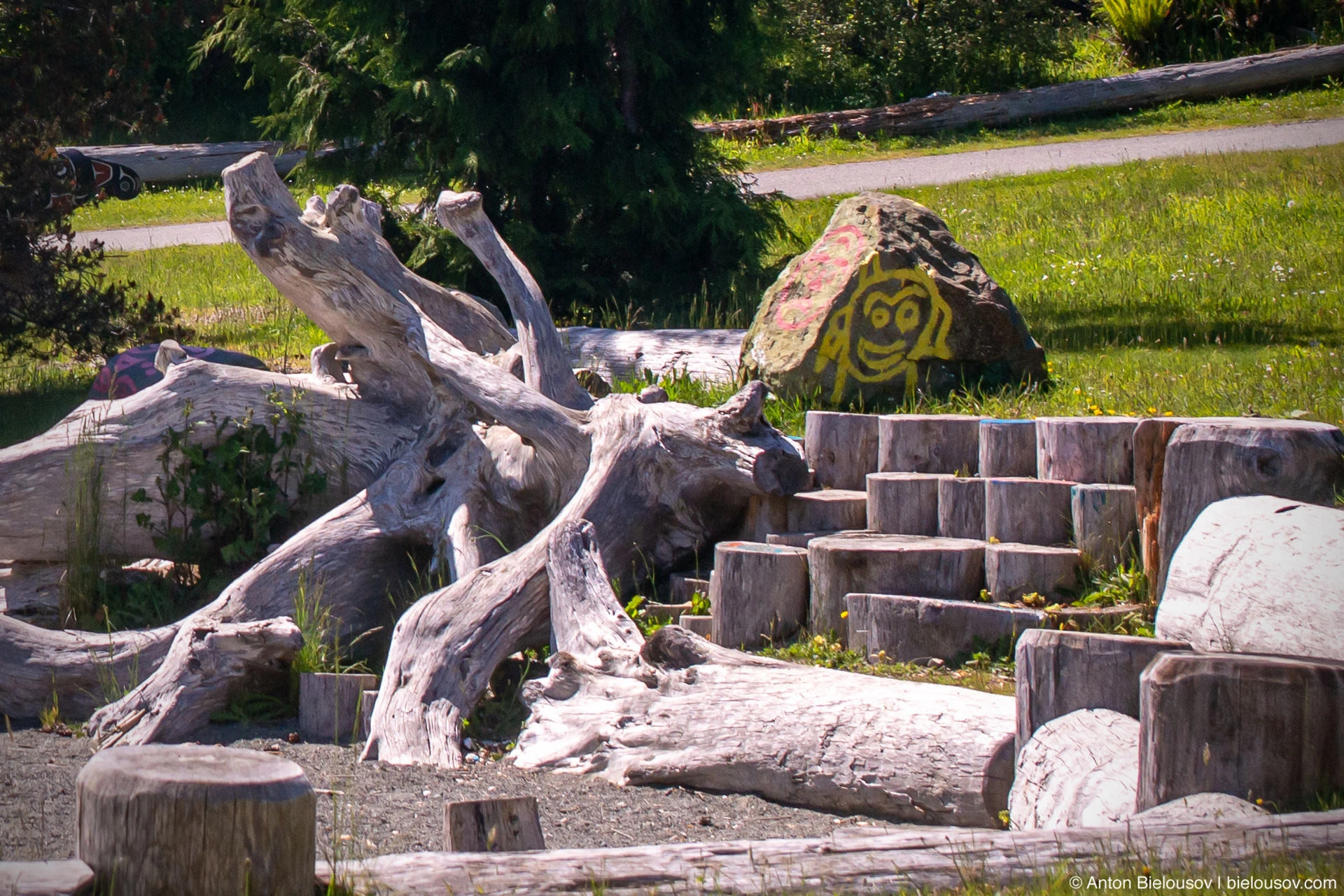
Along the water, there are five such gazebos with totems of various sacred animals. This is an owl, for example. I will not show the rest, come and see for yourself.
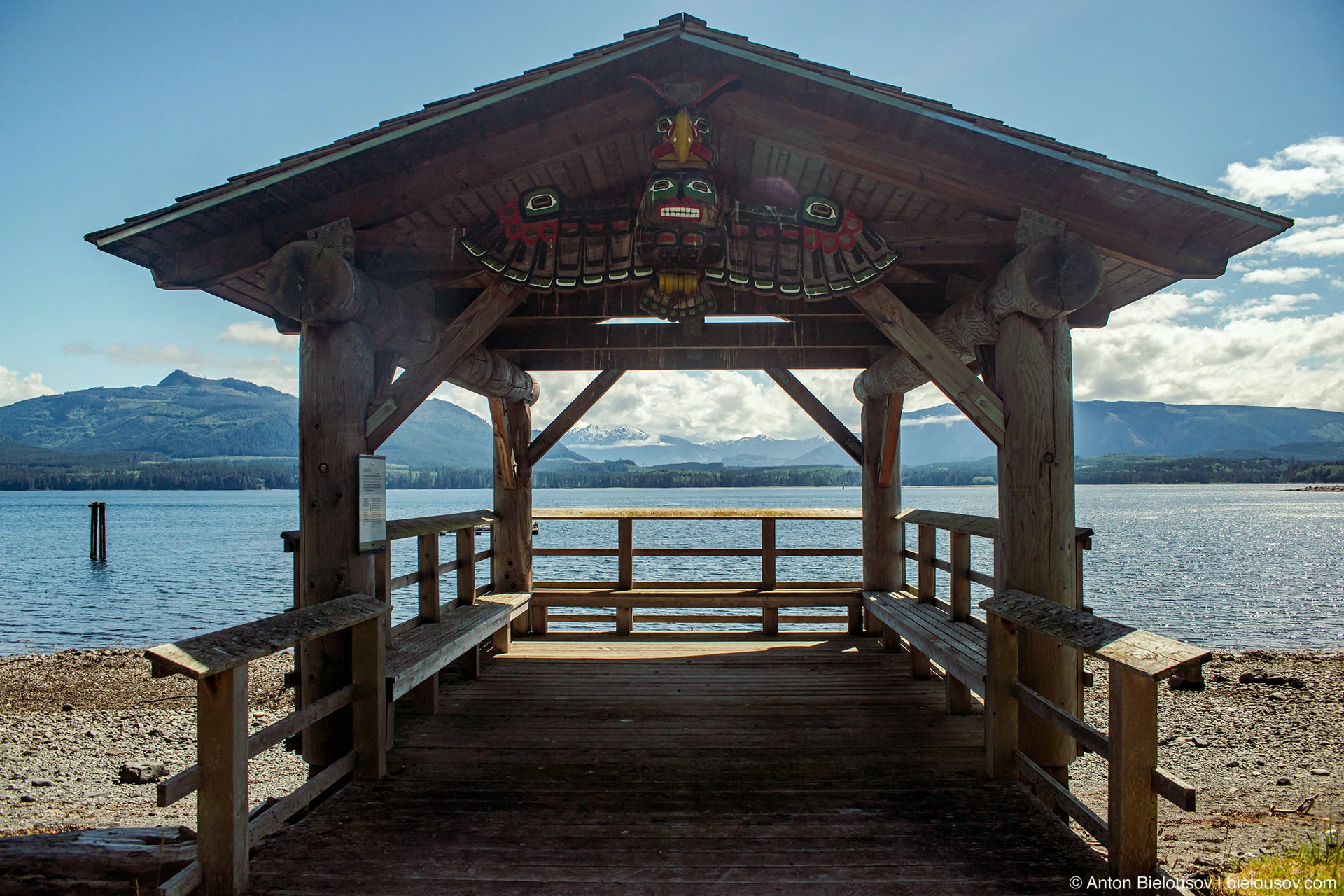
In general, an Indian settlement is always recognized in two counts, and, unfortunately, very rarely on the following grounds:
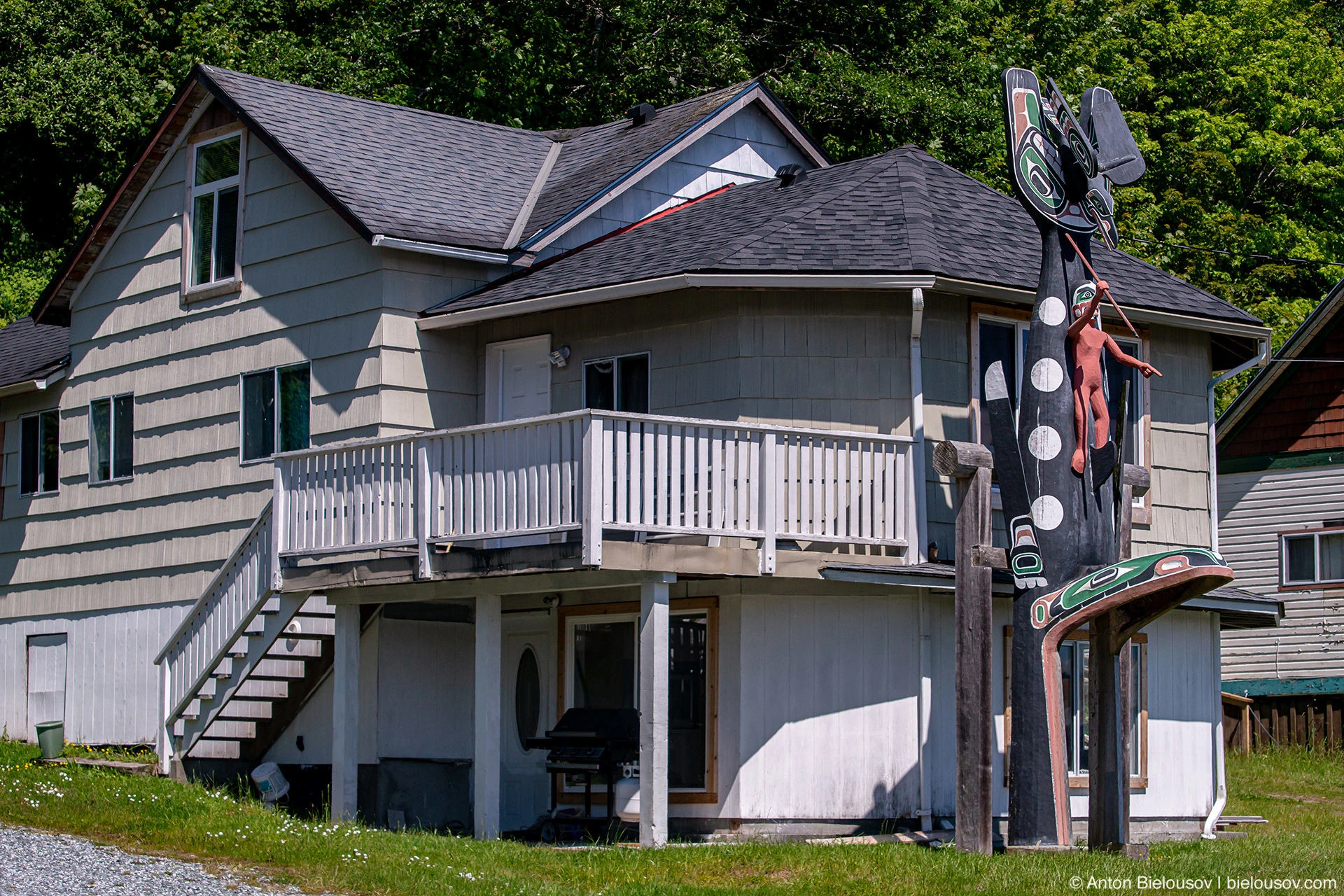
In this regard, the commune in Alert Bay is in very good condition.
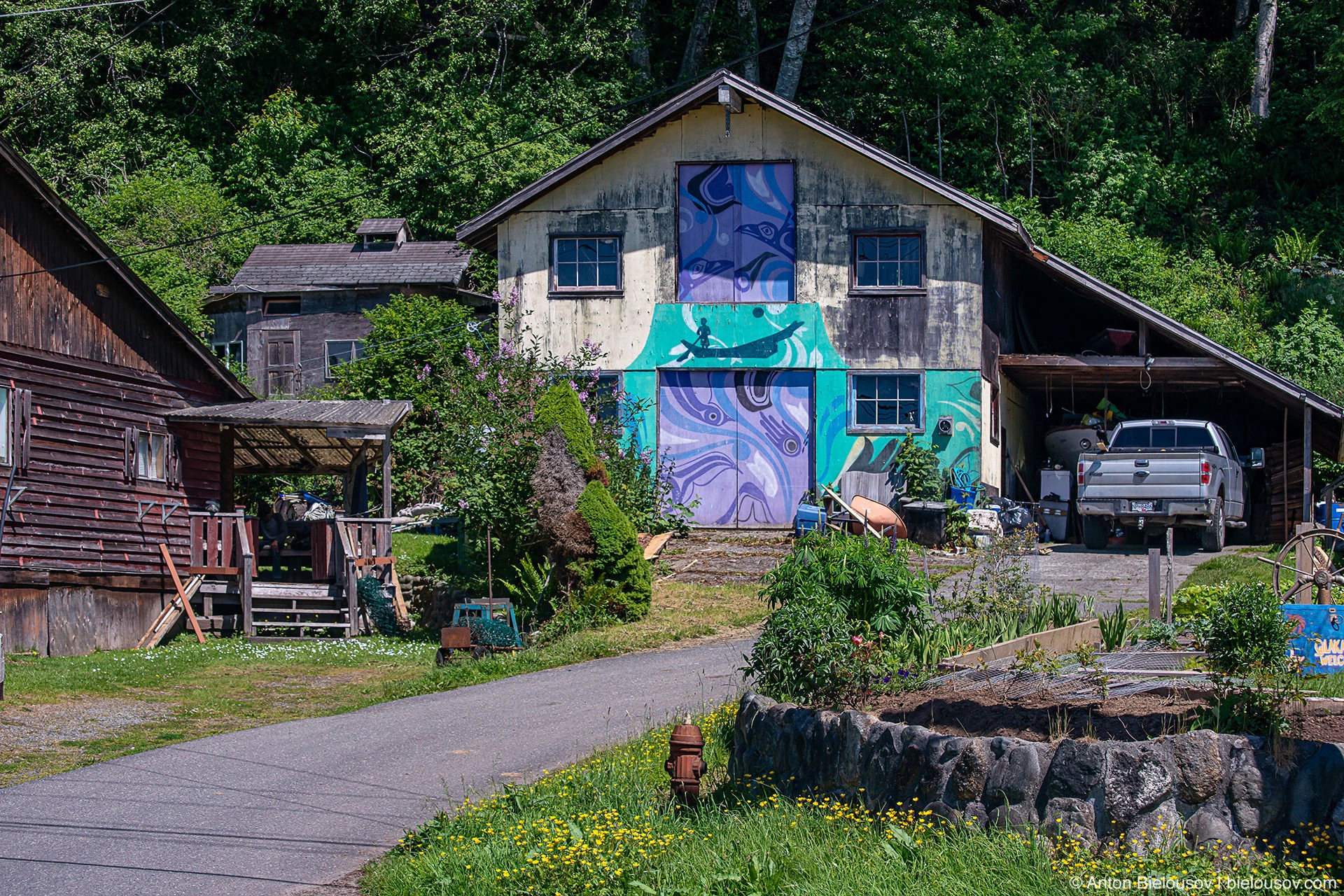
Actually, we walked the entire southern side of the island, but in its center there is another attraction that I really wanted to see. The western, northern and eastern coasts of the island are not inhabited and an ecological reserve has been broken up in its central part, where a very beautiful, judging by the photo, swamp should have been located. Having two hours before the ferry, we tried to find this swamp ... three times ... but each time we went through the island to no avail - apart from a pleasant forest for a walk, an empty camp site and a local dump, we did not come across anything like a swamp. No, I got another double-decker bus because why not?
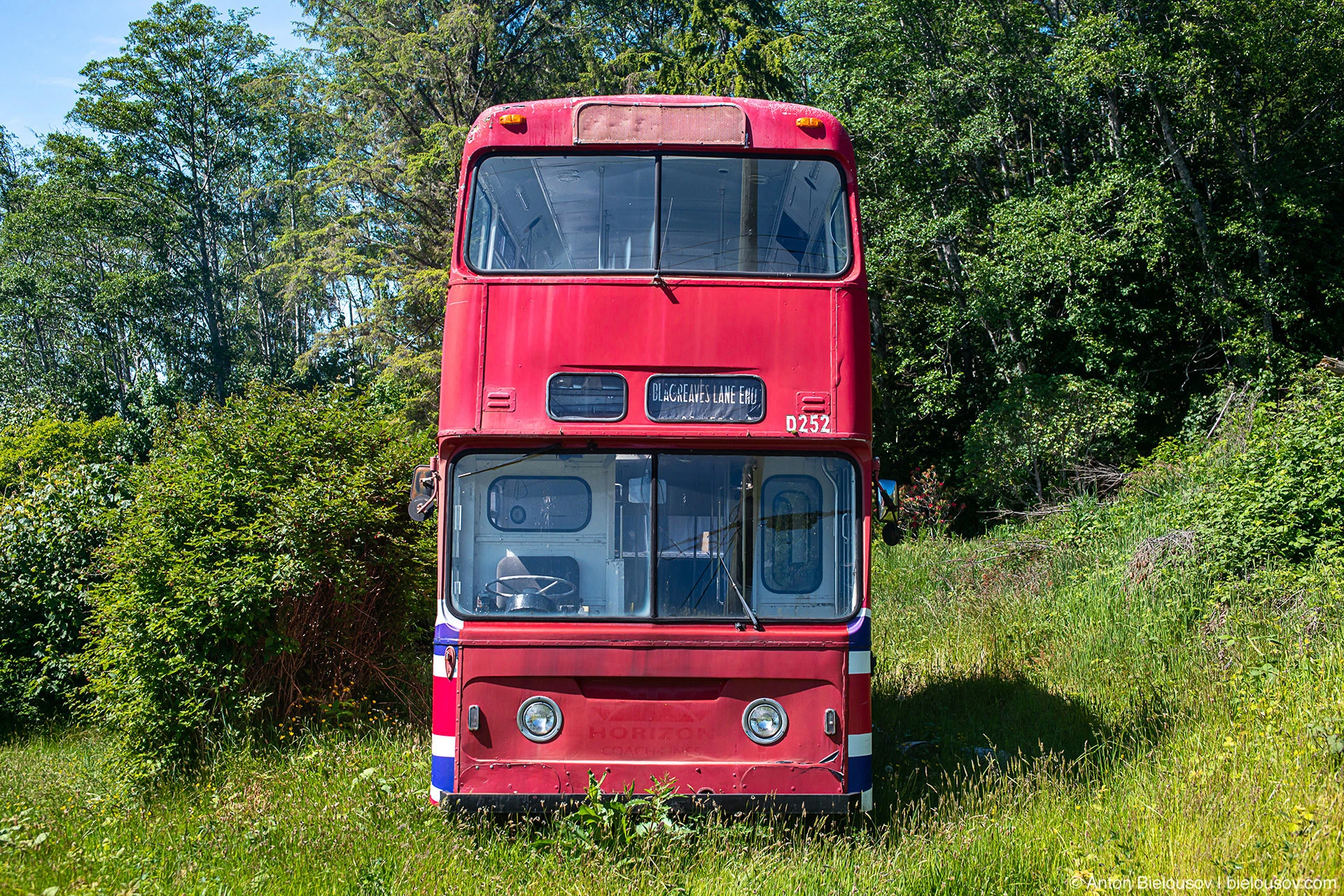
On the beach, however, an otter was caught, which in no way expected people here.
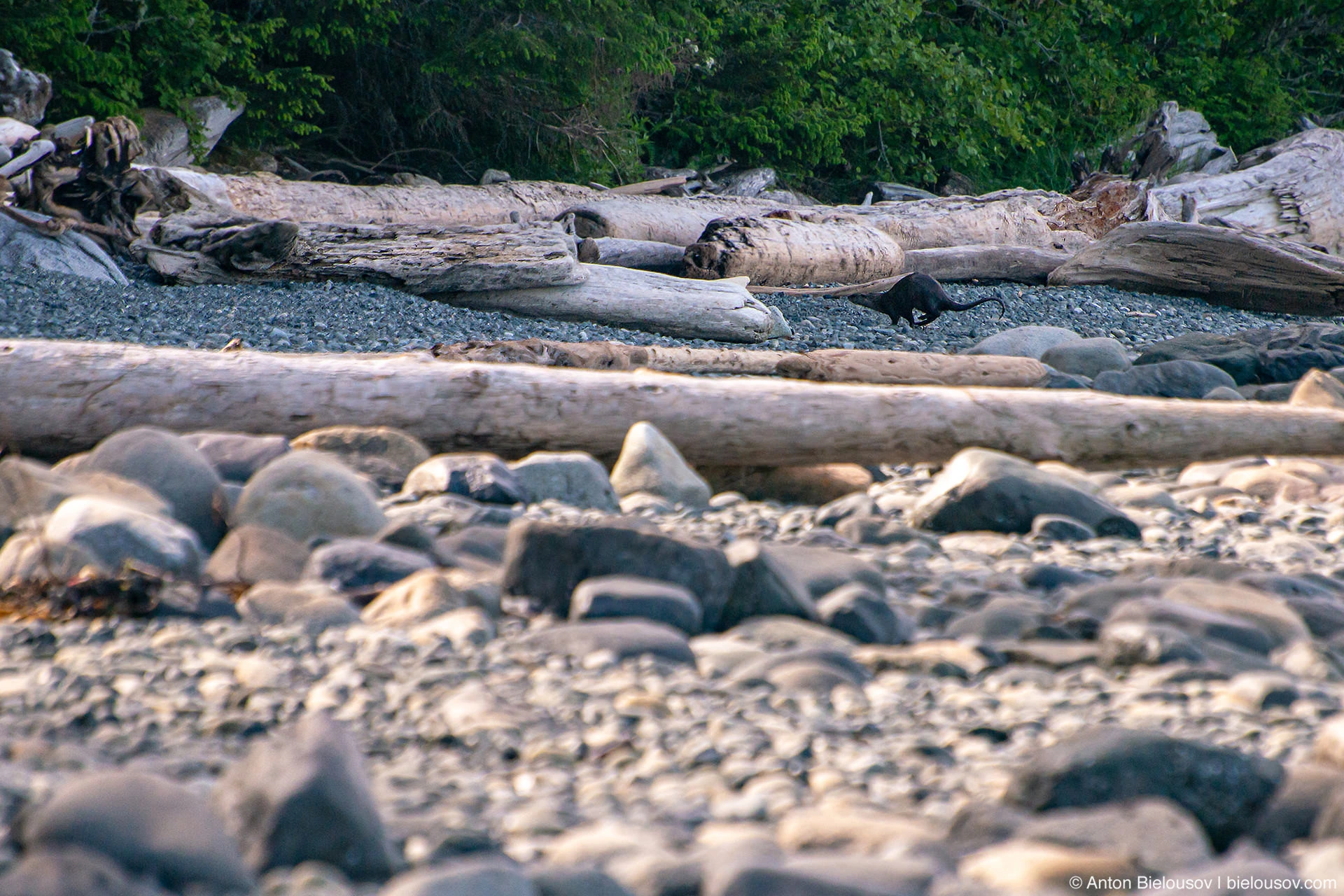
Having taken a breath of sea air, we again set off for the forest, this time with a ferry course.
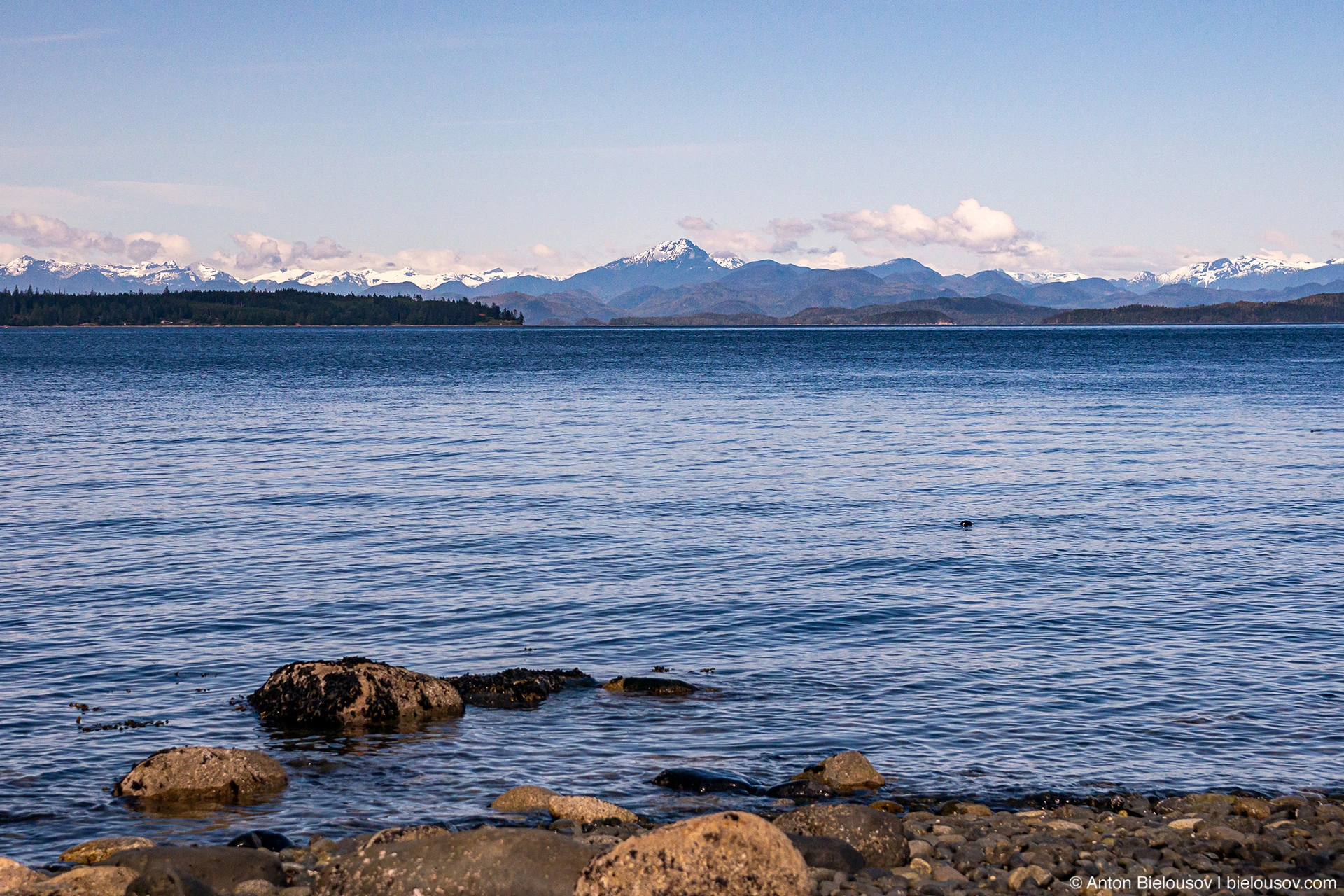
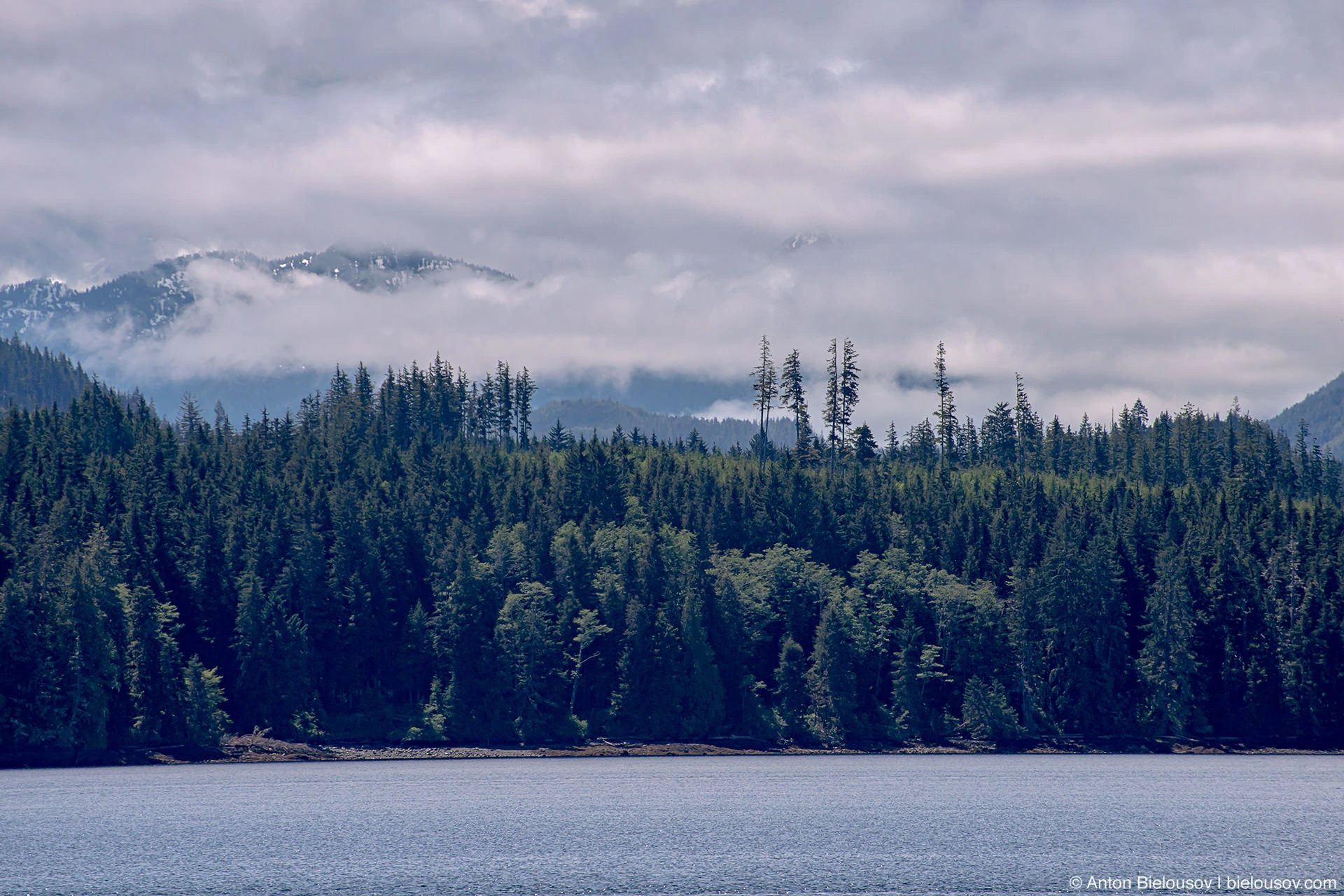
And here, quite by accident, in the middle of the forest - a swamp glade.
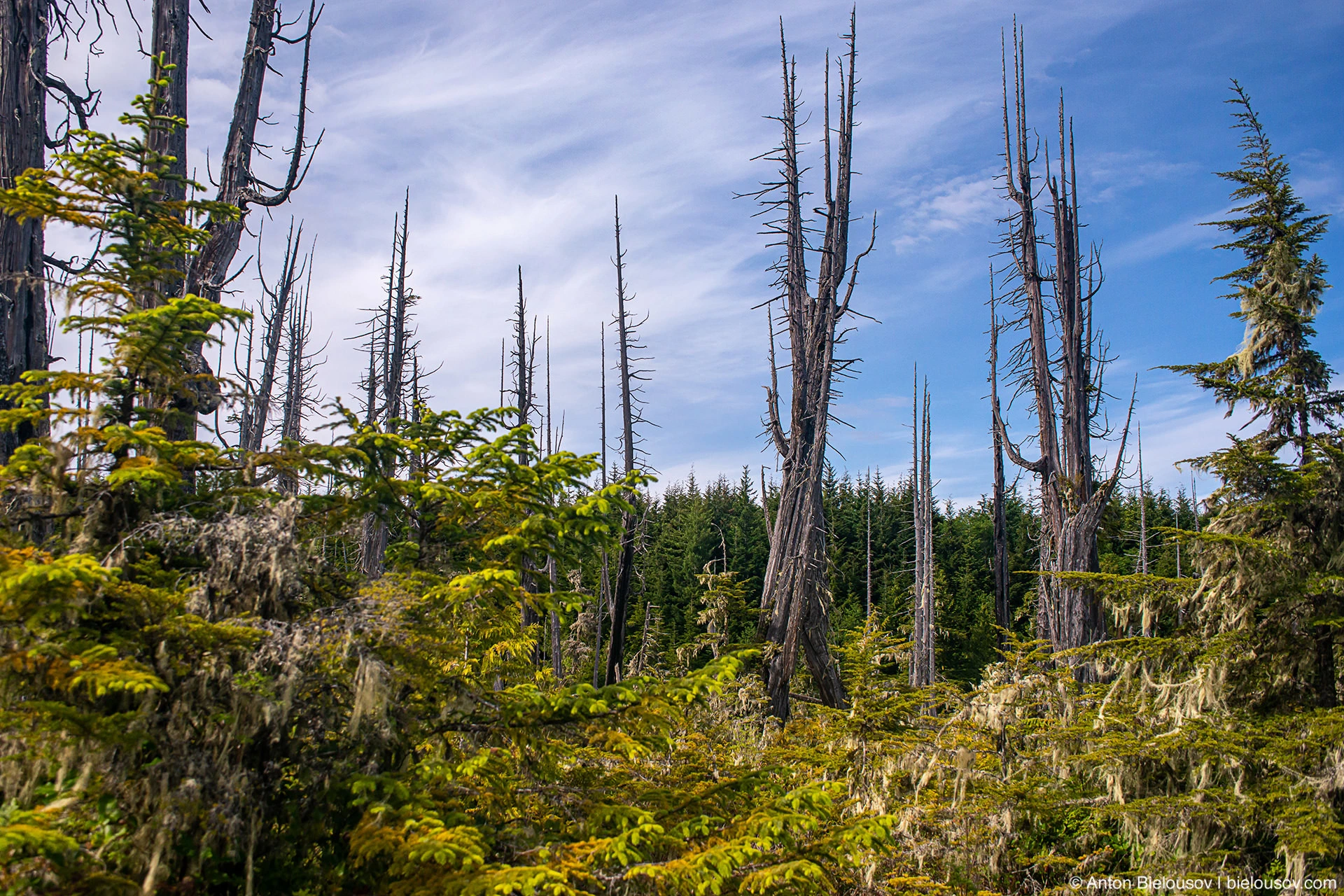
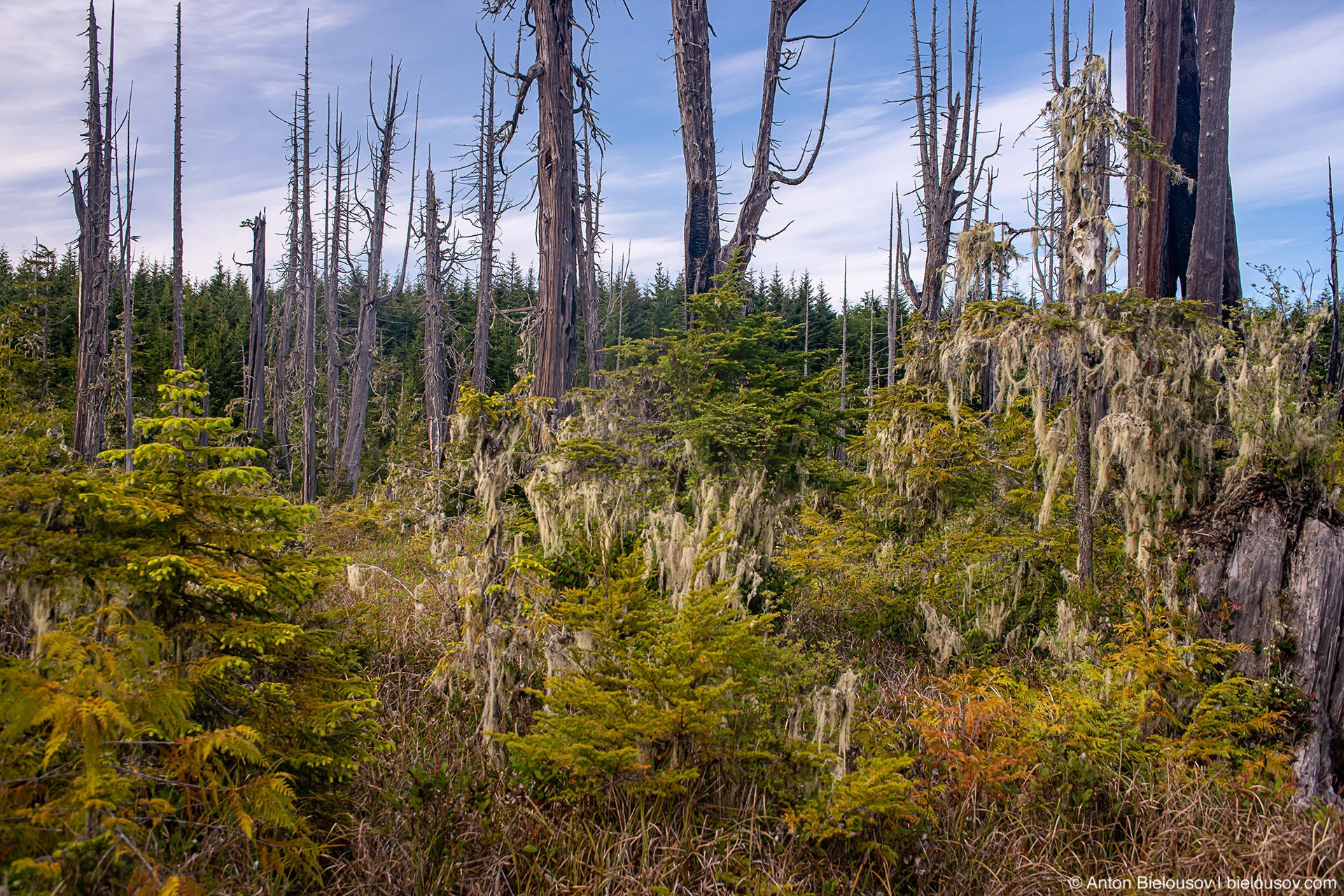
With a massive dead wood, with wooden platforms - all the memories of the trip to the West Coast Trail came to life at once. Needless to say, we also went there (again), and more about that next time?
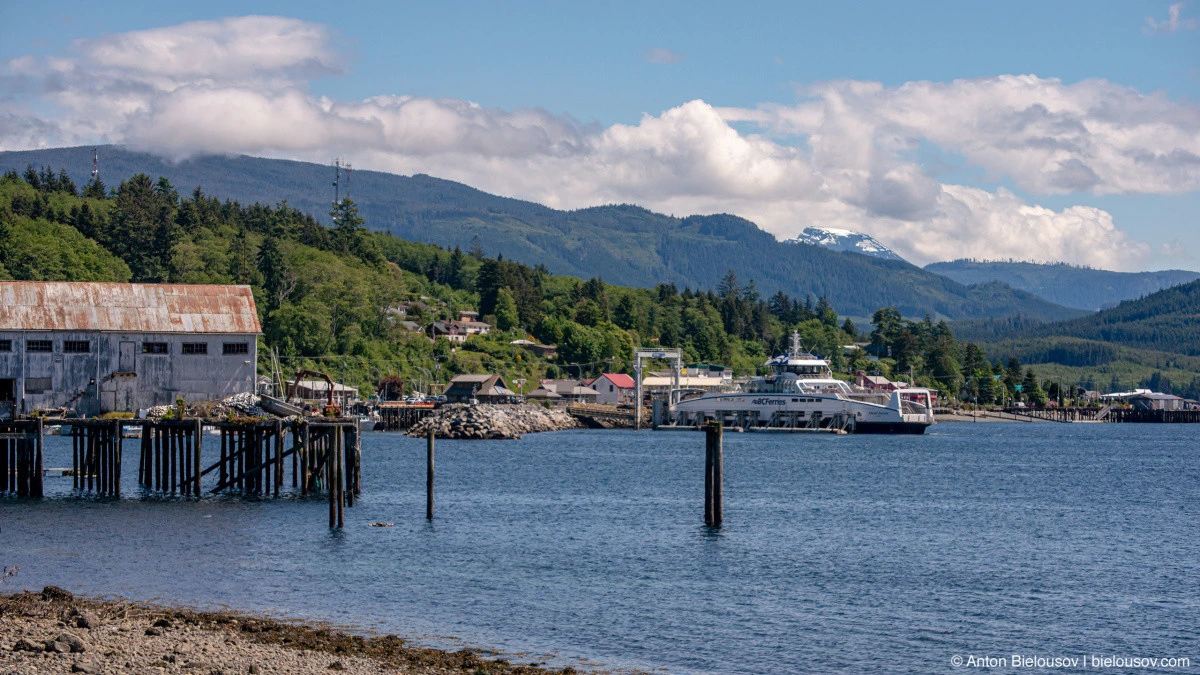
In short, Alert Bay is beautiful. Come here.
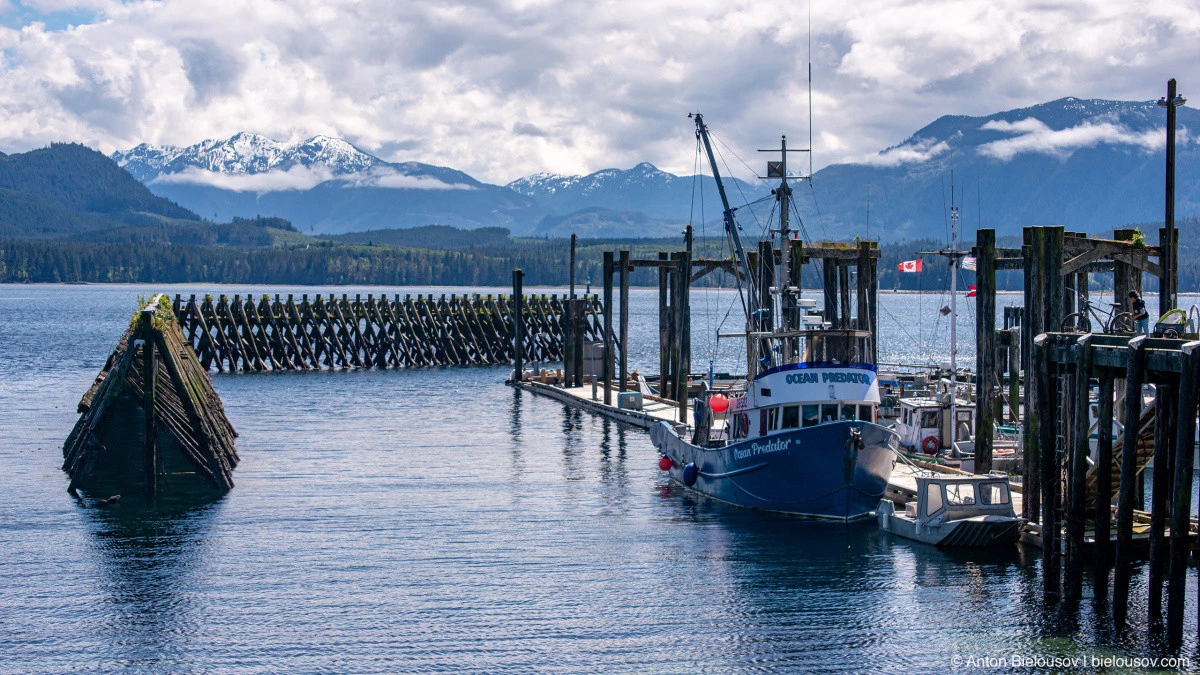
Well, I will finish with a phrase that a woman from an Indian tribe, forcibly resettled and raised in a Ukrainian family in Manitoba, told me: “If you come to Canada, you are the first representatives of your family on the continent, you can also consider yourself the first nations of yours. country".

